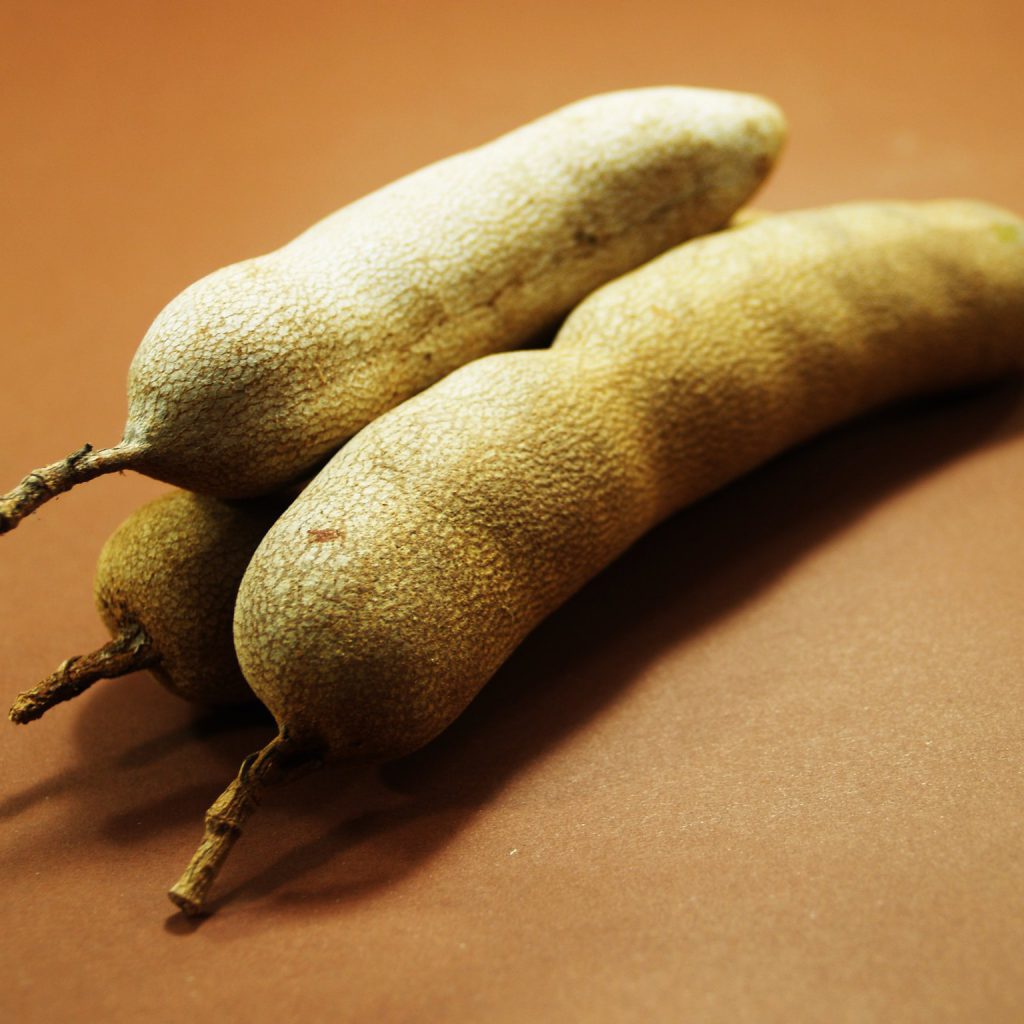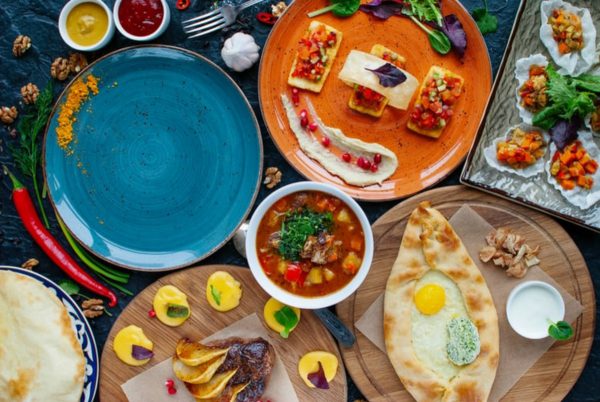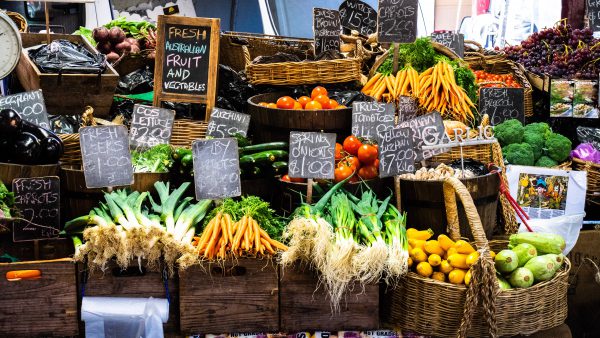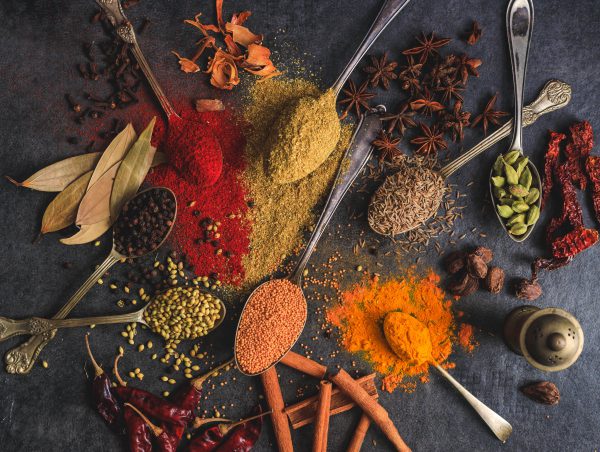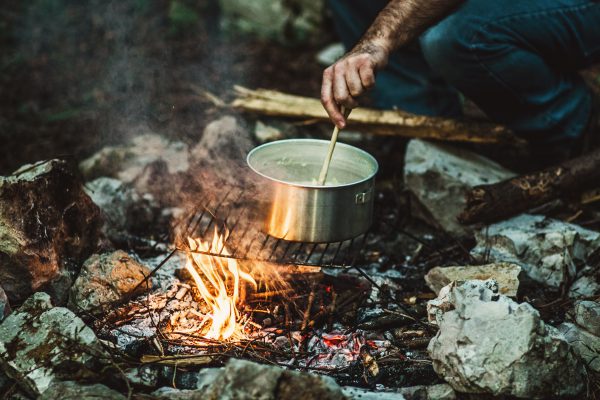Last Updated on May 28, 2023
The fragrant and aromatic spices are the foundation of Indian cuisine. They bring a touch of authentic spirit to all the famous dishes. From curry, rice, and dals to vegetables and meaty stews, be they humble or celebratory, Indian dishes are flavored with a combination of different spices.
Still, when you ask someone to name at least 3 favorites, most folks can’t go beyond the famous curry.
Curry is delicious, we give you that. But it was heavily generalized by the western merchants to refer to all Indian spice mixes at the time, and the misconception has stuck until today.
If you’re curious about all the exciting Indian spices and how to use them, we’ve got you covered. Read on to learn all about them!
A List of The 20 Essential Indian Spices
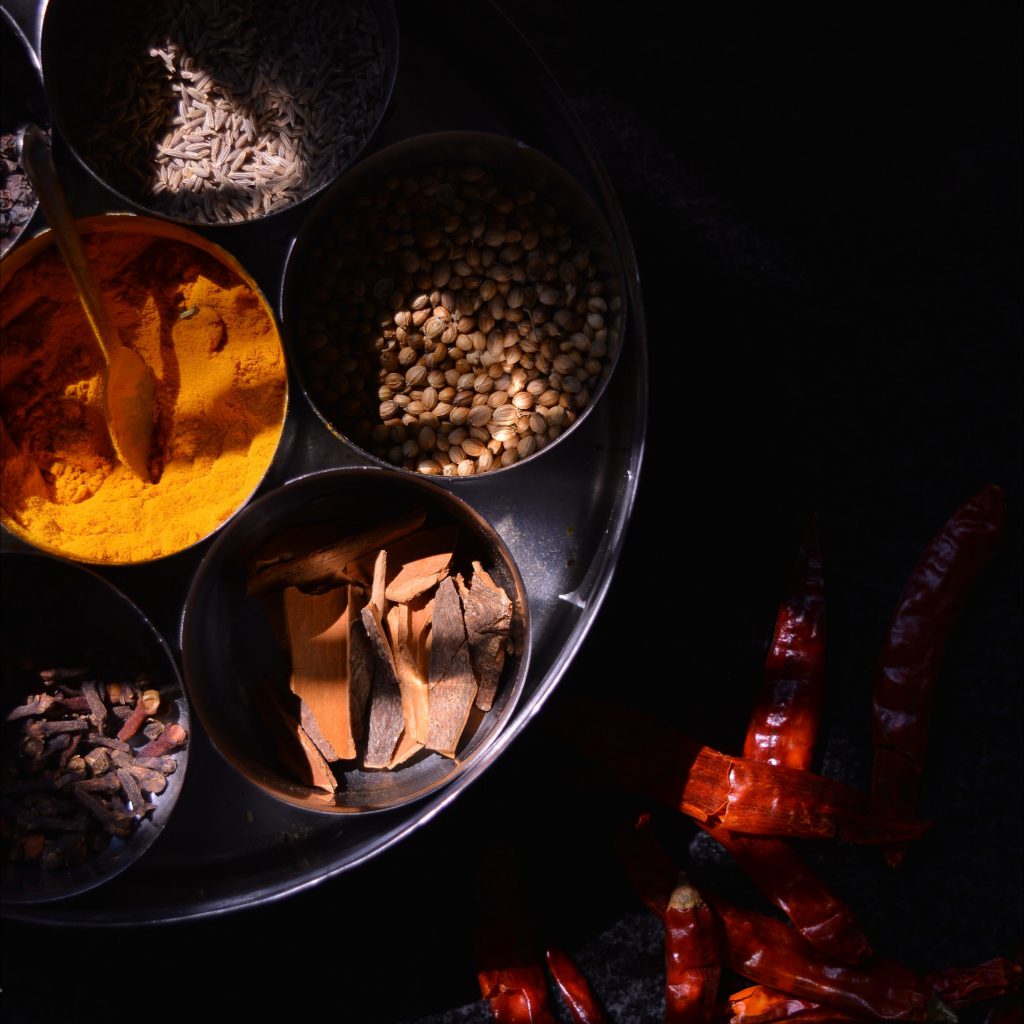
Most people seem intimidated by the sheer variety of Indian spices. However, you’d be surprised to learn that most of these spices are already in your cupboard. You just need to know how to treat and combine them.
Spices are a great way to add flavor without adding extra calories to your dishes. Incorporating more spices into your cooking is like upgrading your box of paints to make art. And you probably won’t start experimenting with all the hues in there at once. Similarly, you can start humbly with only a few spices at a time.
Anybody can throw some butter and bacon on a skillet and make something delicious, but to have a real understanding of these delicate spices requires paying attention to different layers of flavors and aromas.
So let’s get started with the most used spices in Indian cuisine.
Curry

Let’s start by demystifying curry. Even though it’s probably the most famous Indian spice and dish people know, it’s actually more common in the West than it is in India.
Curry is actually a plant that’s used as both a spice and a fresh herb. The curry made famous around the world by Western explorers is a mix of a variety of spices lumped together under one name.
The words khari or caril are commonly used for any spices used to season a dish or to name the final dish — just like the Filipino kali kali. That’s why, today, we use the name curry to refer to both the yellow spice mix and the dish containing curry as its main seasoning.
Curry powder, as we know it, is a blend of several spices round together. It’s usually made of cumin, turmeric, black pepper, and ginger, but there’s no one size fits all recipe for a curry mix. You can get any one of the spices listed below in a curry mix — except, for some reason, curry leaves.
Curry Leaves
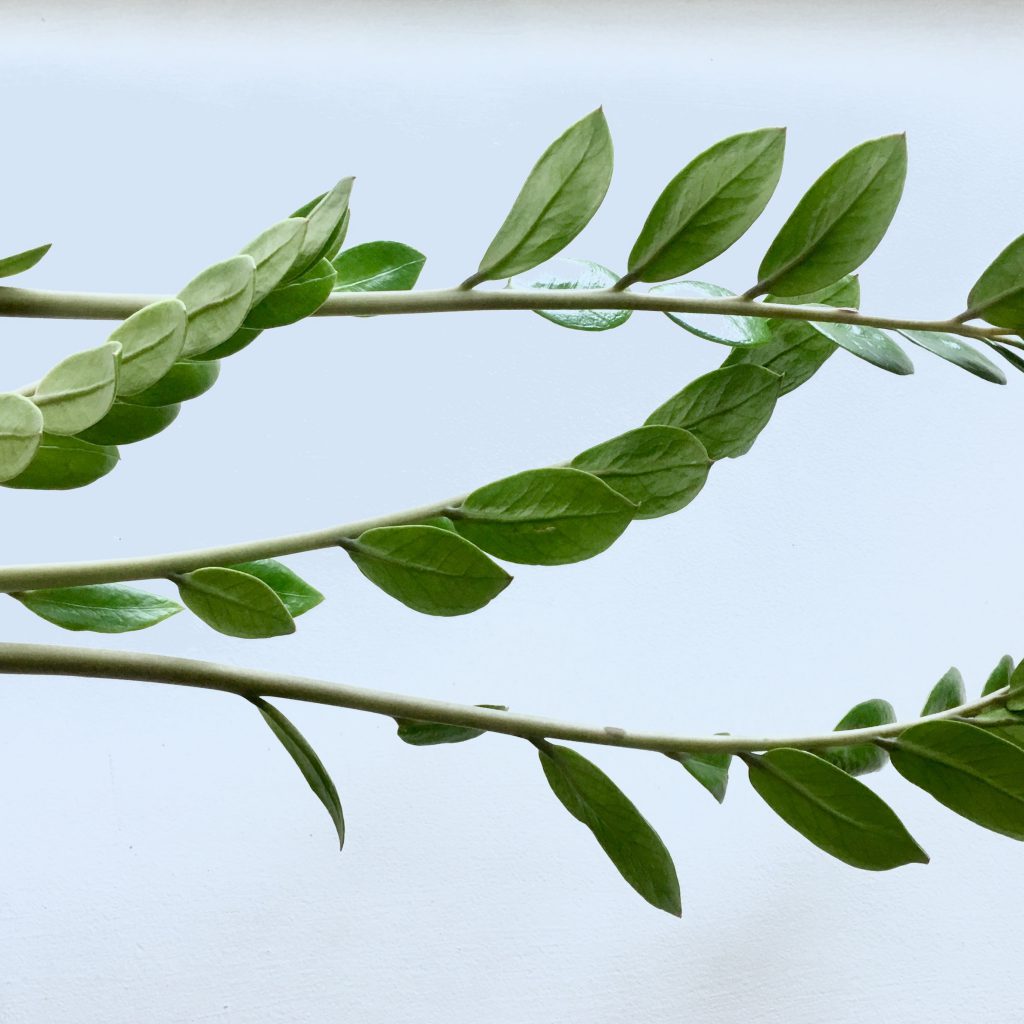
Apart from the spice blend, there’s a plant called curry, and its leaves can be used as fresh herbs — as if the word curry wasn’t complicated enough. Curry leaves impart an aroma that’s much subtler than the spice blend, with mellow nutty notes. They are usually used to aromatize the oil at the beginning of the cooking.
Coriander
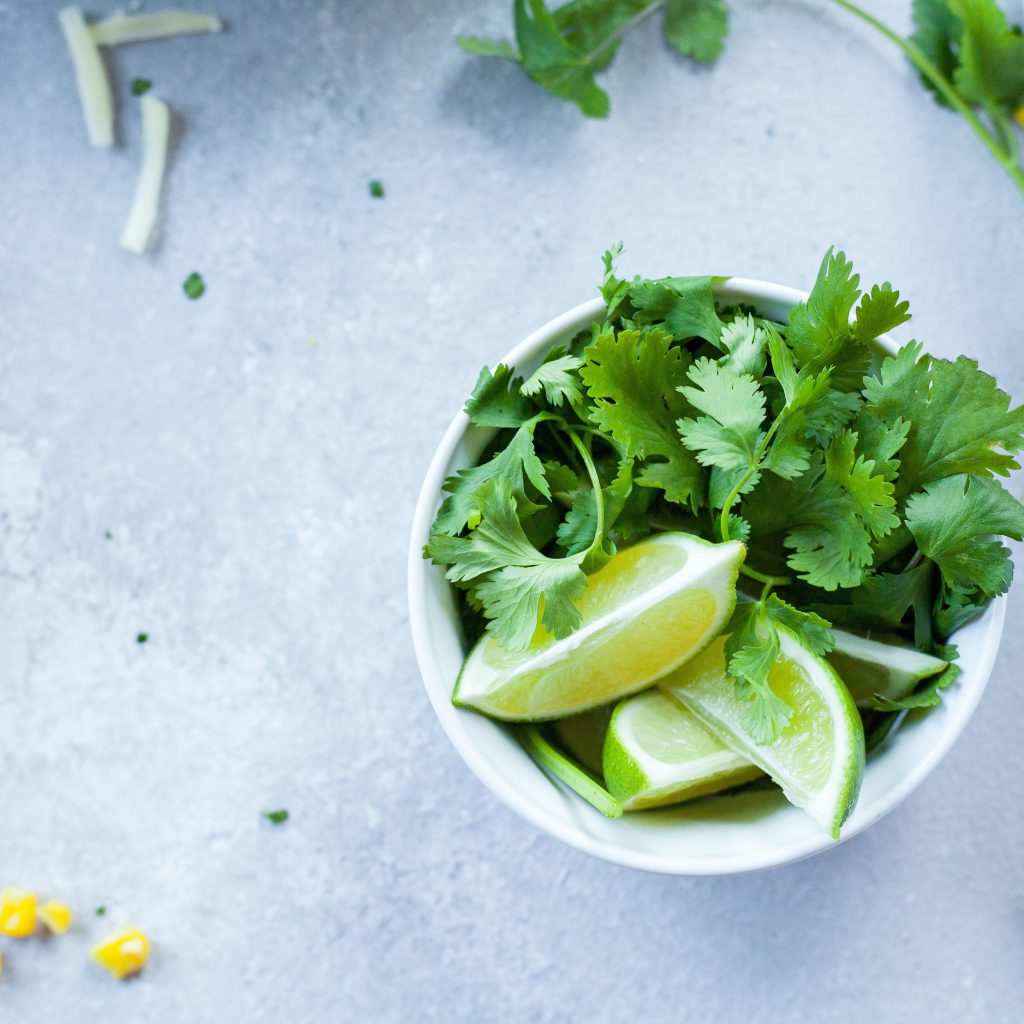
Coriander comes as whole seeds or dried powder — it can also be found as a fresh herb. The seeds are almost peppery and have a really nice texture.
Coriander can look very similar to cumin powder, but it’s much more pungent, with stronger eucalyptol tones. It’s one of the spices usually responsible for the heat in Indian food, apart from chilies. However, when used fresh, it adds a grassy, herbaceous floral note.
Coriander seeds are a fragrant and flavorful way to add some spice to meat dishes. However, when ground into a powder, their flavor becomes more floral and top-noted. Just like the seeds, coriander powder compliments red meat perfectly, so you can use it in marinades and stews. It’s also common to use it in rice dishes and chutneys.
Turmeric

Just like coriander, turmeric comes in a lot of different shapes but always in the same color: bright yellow. It’s what gives the curry mix that signature color. Despite its out-loud hue, turmeric is actually a really mild spice, and its smell is stronger than its taste.
If you ever work with turmeric, you know it’s also a perfect food colorant. Just adding a quarter of a teaspoon of turmeric powder can give that beautiful golden hue to any dish. Thanks to that, it’s more often used for its coloring properties, and its mildly pungent flavor is a bonus.
Cumin Seeds
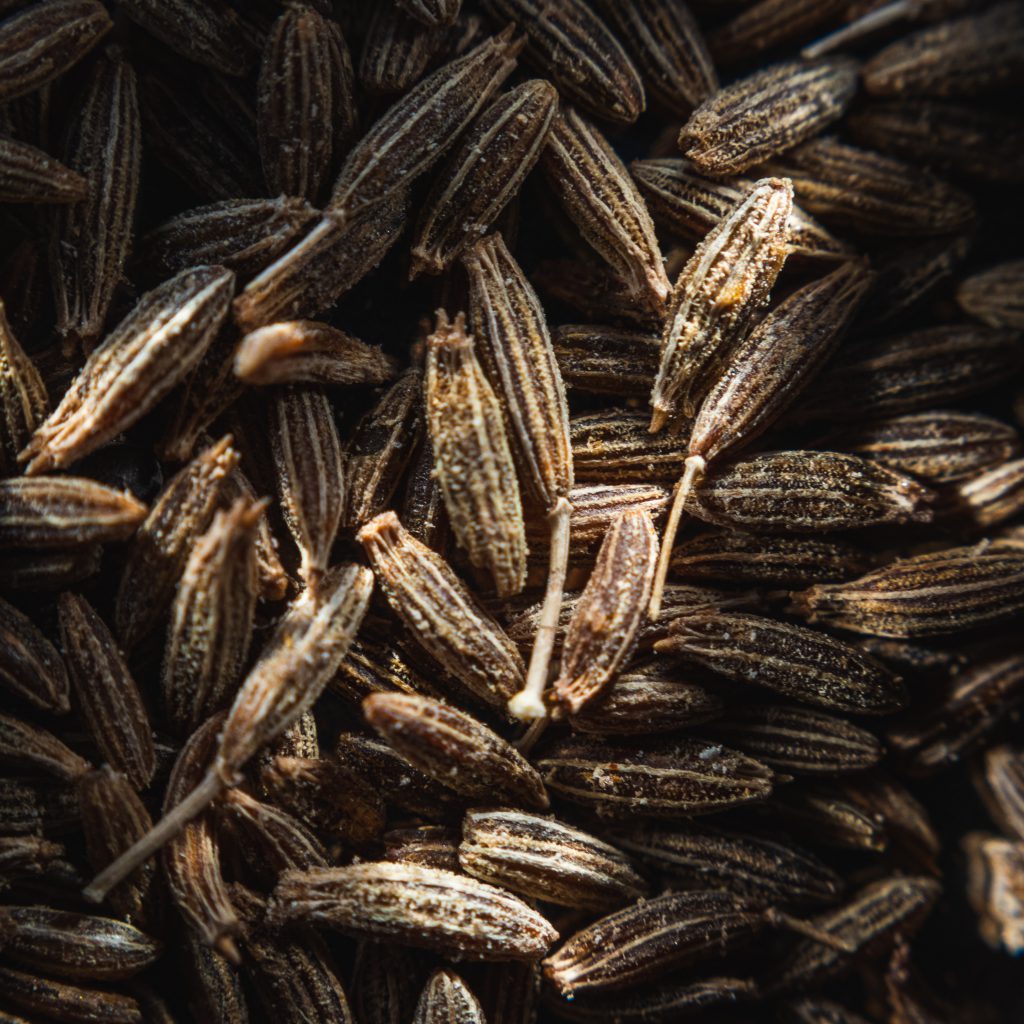
Cumin, the yellowy brown oval-shaped seeds, can be used both whole or ground into powder. It’s another fundamental spice in Indian cuisine with an earthy flavor and nutty notes.
Cumin is a great aromatizer, especially for red meat dishes such as beef and pork stews and dahls, a dish made of dried split pulses or legumes. Cumin also adds a quite nice aroma to vegetarian foods, such as rice dishes, dips, bread, and chutneys, the flavor-bomb Indian spreads.
Fennel Seeds
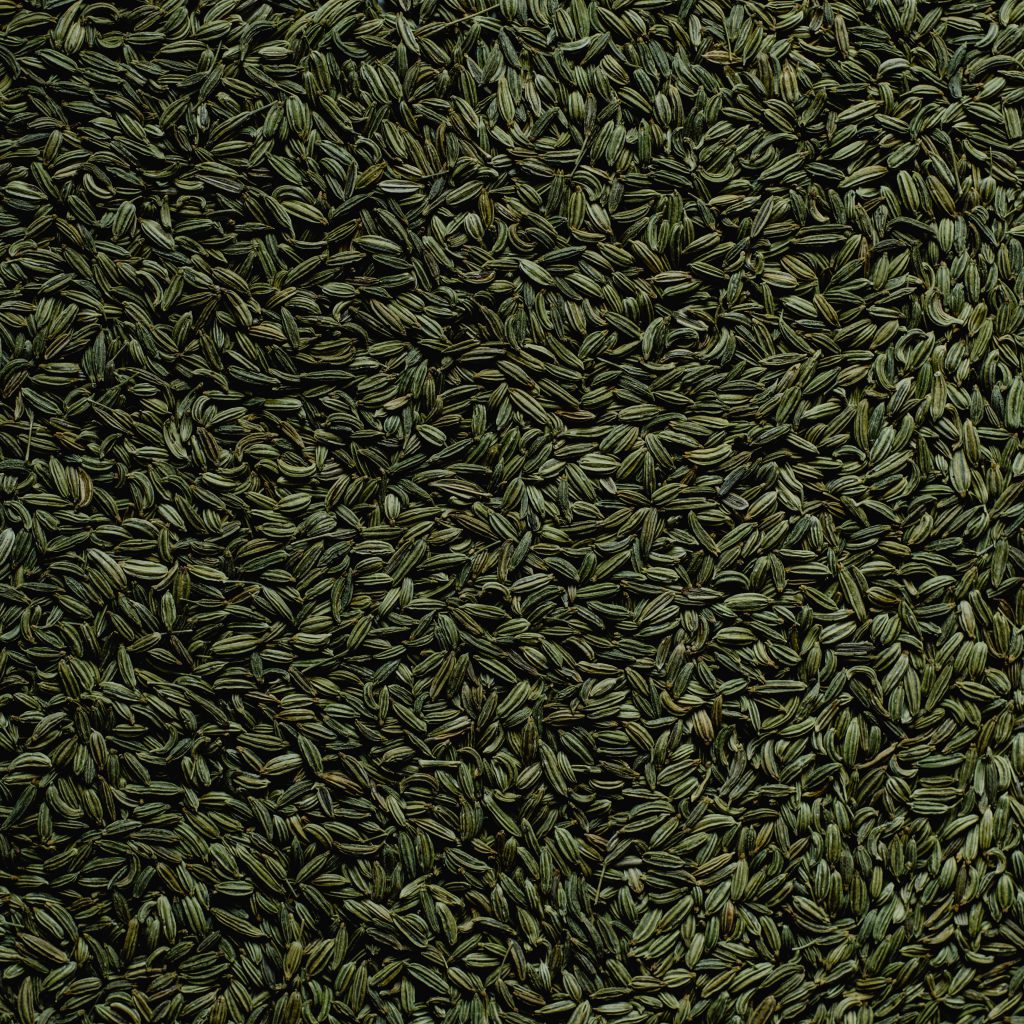
With their herbaceous flavor, fennel seeds are one of the strongest aromatics out there. When used whole, toasted fennel seeds give the dishes a sweet, licorice flavor. Fennel compliments tomato sauces, fish dishes, meat and vegetable stews, as well as chutneys and bread. Thanks to its sweet kick, it makes a killer herbal tea too.
Mustard Seeds
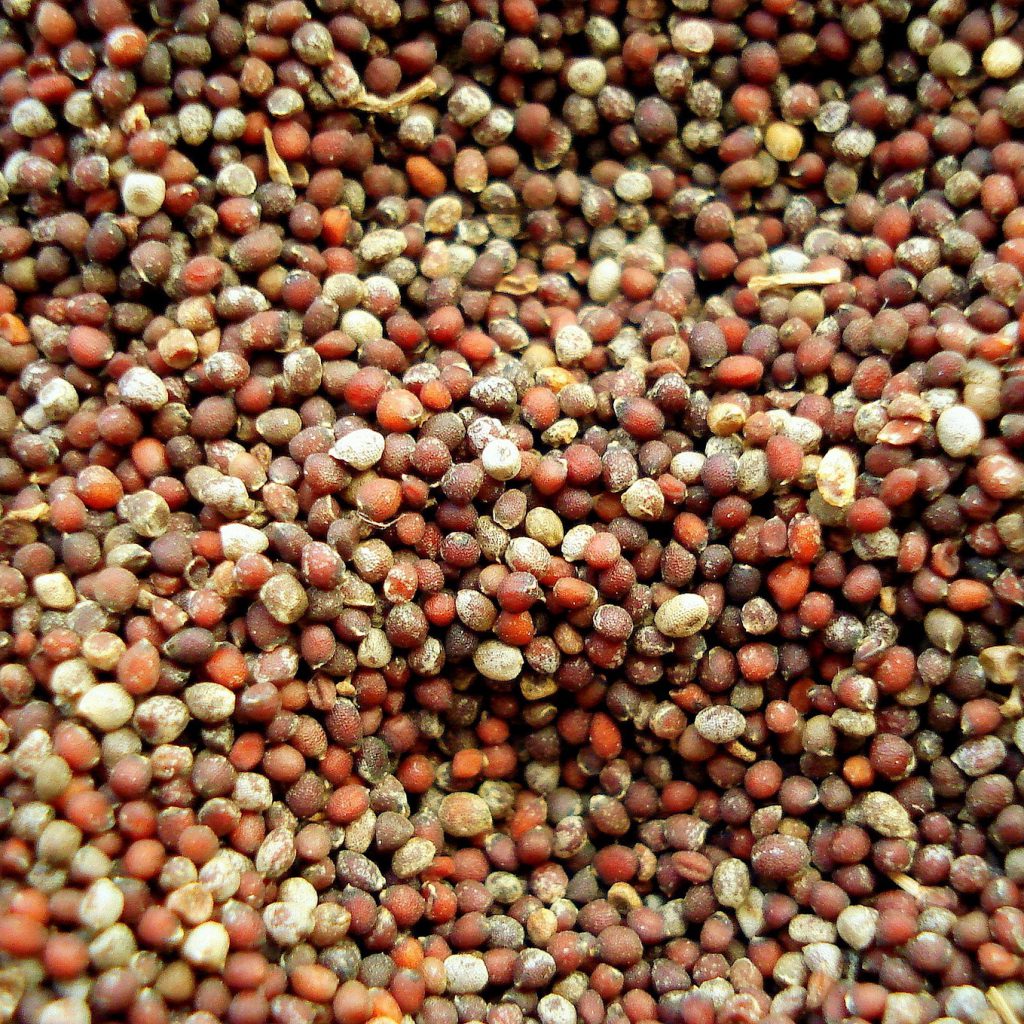
It’s common to use black or brown mustard seeds in Indian cuisine, especially in Bengali and South Indian regions. The seeds are usually tempered in oil until they pop. That’s when they release their unique peppery and nutty flavor into the oil, which infuses into all parts of the dish.
Cardamom Pods
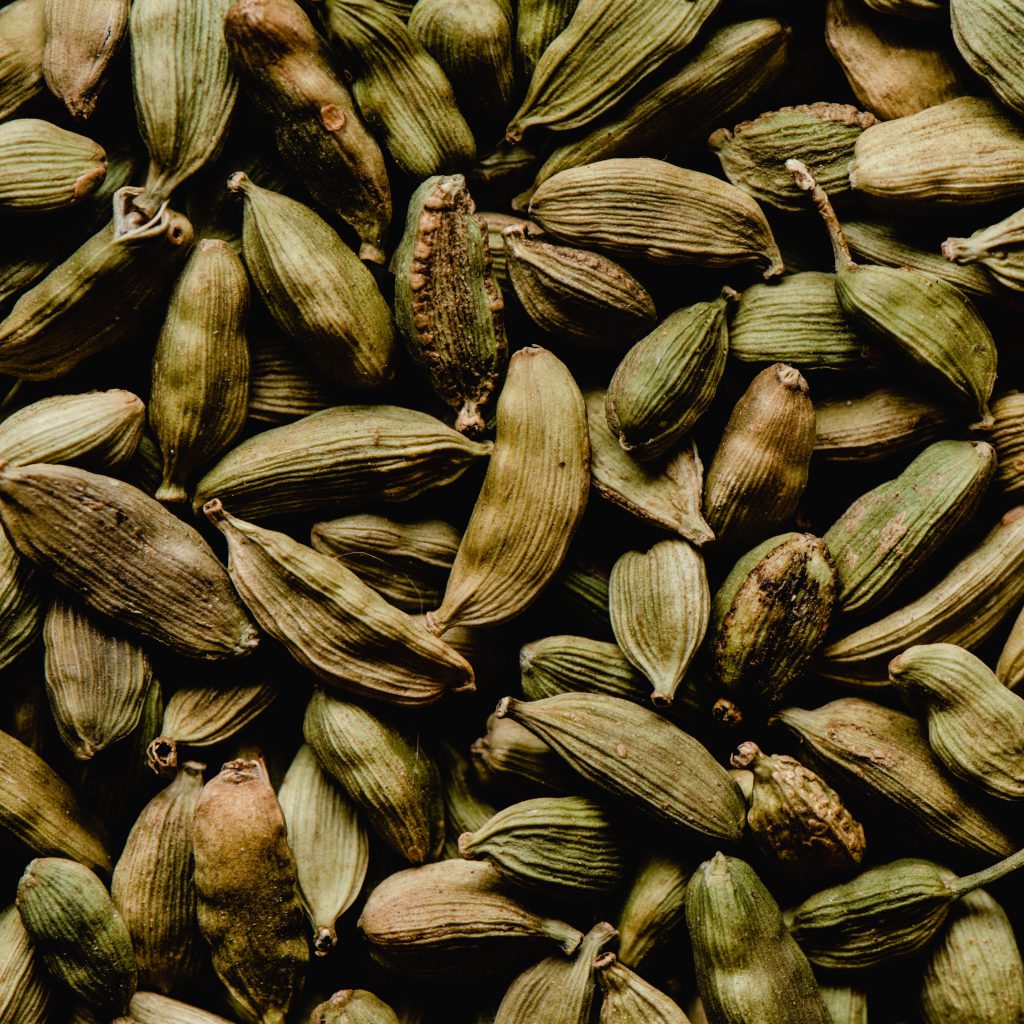
Cardamom pods come in 3 different colors – green, white, and black, the green ones being the most common type. It’s a unique aromatic with both a nutty and a fresh, slightly sweet floral flavor. Thanks to that, it works wonders for scrumptious desserts and herbal teas. Its sweet tang and perfume-like smell also enhance the flavor in a variety of dishes, from stews to rice.
When you break open the outer green layer of a green cardamom pod, you’ll see black seeds inside, responsible for most of the flavor. The best way to use cardamom is to grind those seeds in a spice grinder or use a mortar and pestle. The resulting powder is packed with an intense aroma and can be a great elevator for meaty stews and vegetarian recipes. Just make sure to add cardamom towards the end of the cooking as it develops a bitter taste when overcooked.
Cinnamon
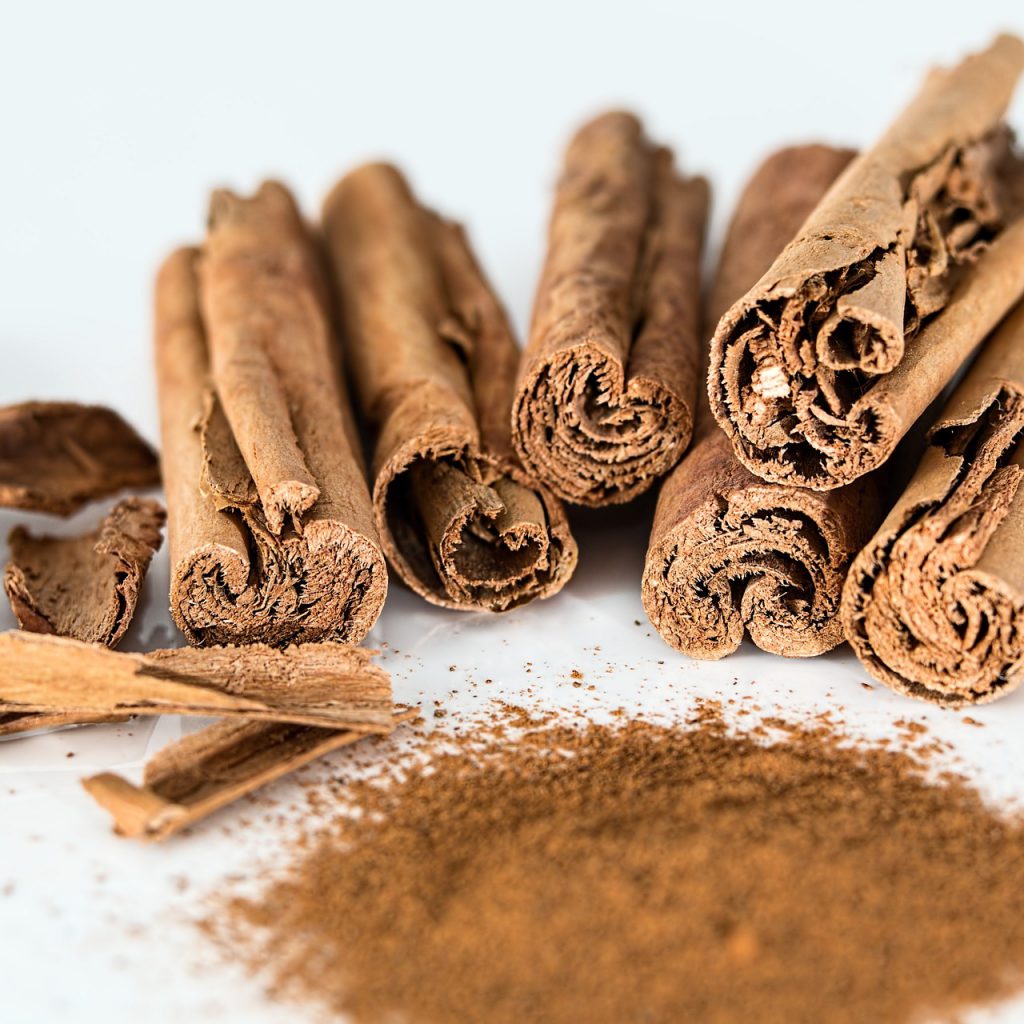
Cinnamon is commonly used with pastries in the West, especially when the holidays are around. But in India, it’s common to add cinnamon powder to dishes like meat stews, lentil soups, and chutneys. It’s a great way to add a sweet yet spicy kick to any dish. In fact, cinnamon sticks are one of the key whole spices you need for basic Indian cooking, especially for dishes that you simmer for a long time.
It’s common to add a cinnamon stick in the oil along with cardamom and whole cloves when sauteing ginger, garlic, and onions. This makes up for a traditional paste that works as a flavor base. The other ingredients are added on top, so the whole dish is infused with a complex aroma and flavor profile.
Cloves
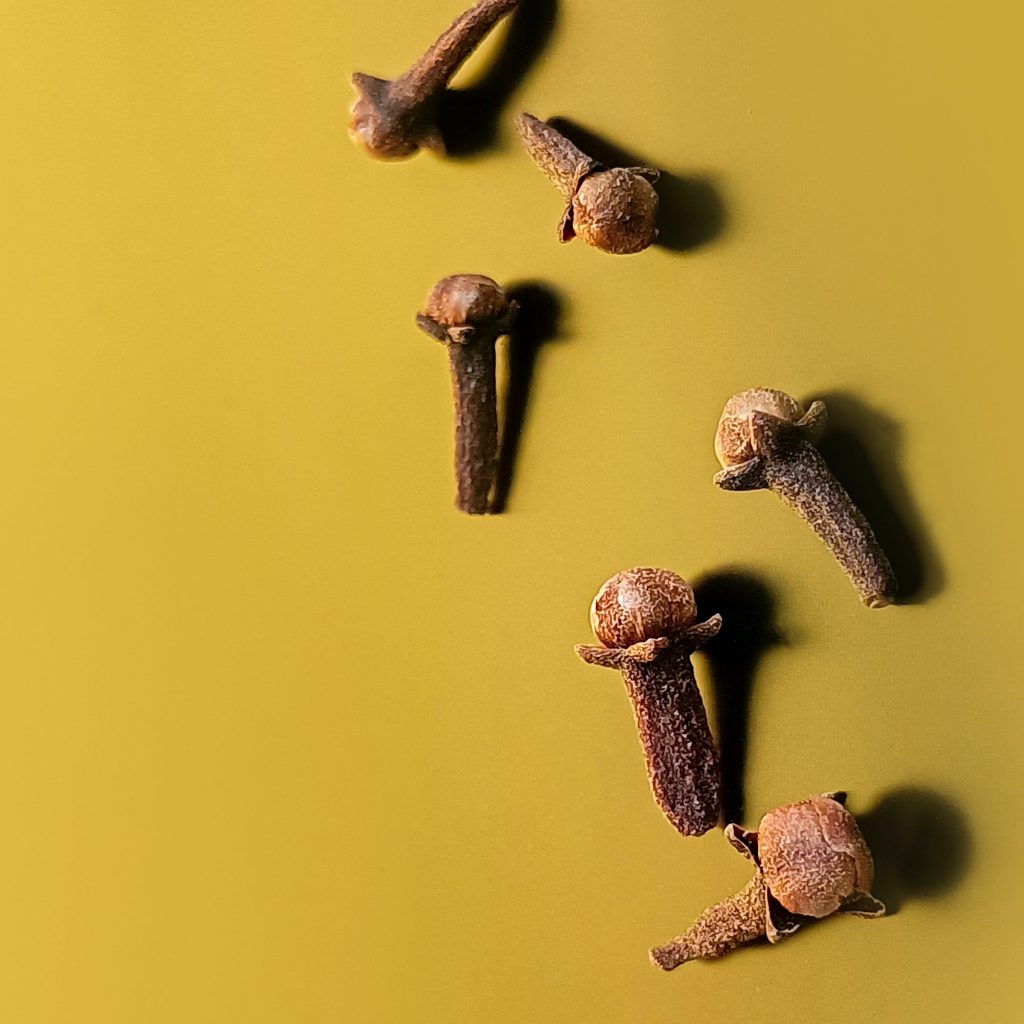
Cloves look and taste like tiny needles with an additional fresh breeze. They are one of the most intense spices with their minty punch. That’s why you need to use them in moderation.
Like most whole spies, it’s common to use whole cloves in Indian cooking, especially in stews and soups. They are also one of the base ingredients to make spice blends as well as marinades.
Nutmeg
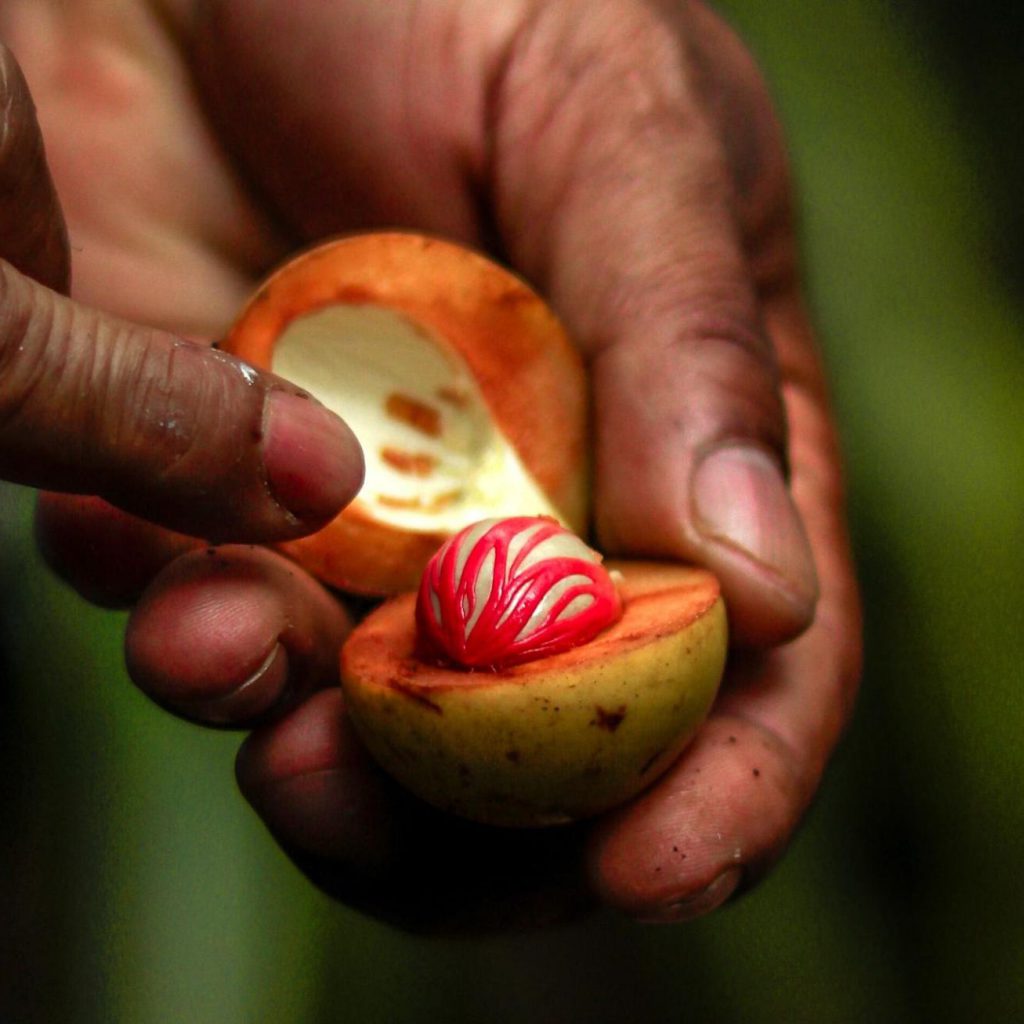
Nutmeg is a spice celebrated everywhere in the world. You have it in American pumpkin pie, Canadian eggnog, Italian tortellini, Scottish haggis… Rumor has it it’s also one of Coca-Cola’s mysterious secret ingredients.
In Indian cuisine, nutmeg is used in both savory and sweet dishes like stews, rice, bread, and pastries. It adds a great aromatic richness to any dish, which is why it’s also generously added to general-purpose spice mixes like garam masala.
Chilli
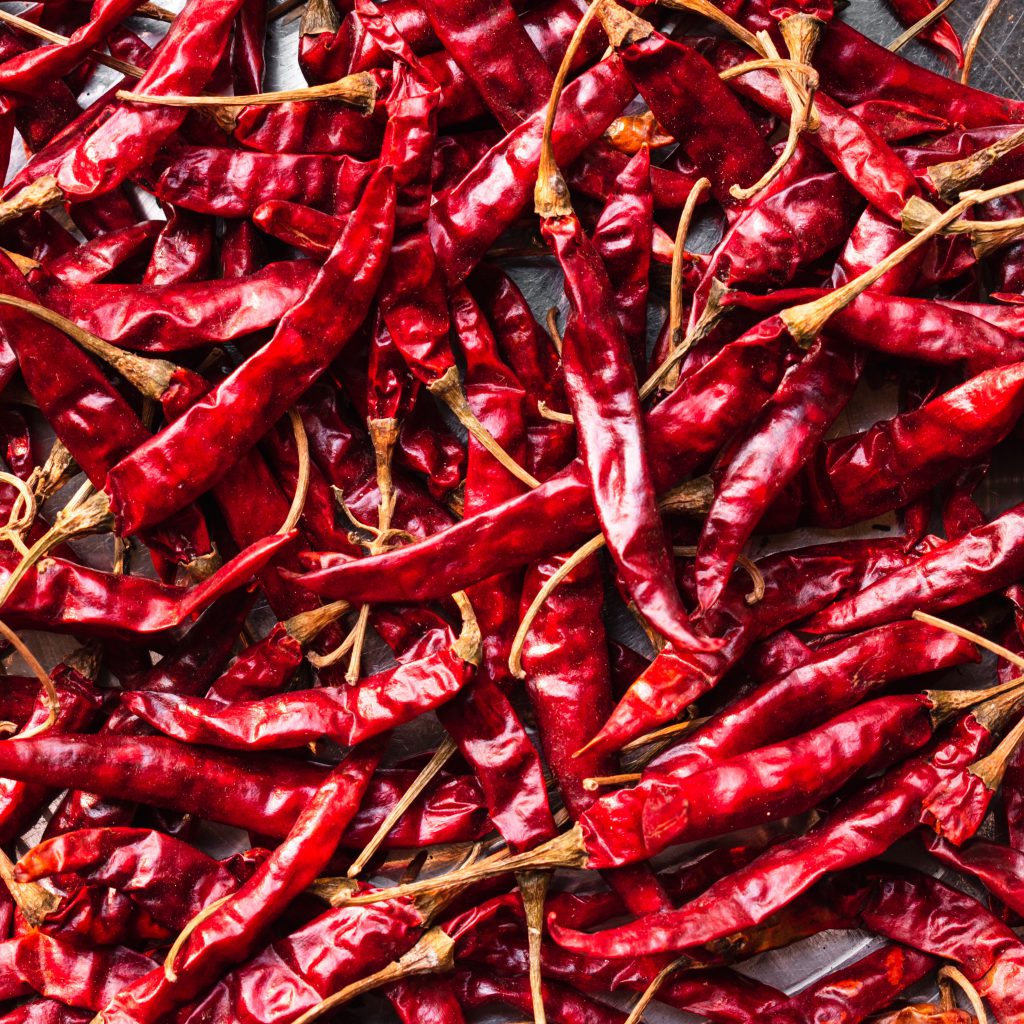
In the 16th century, the Portuguese took chili peppers from Latin America and introduced them to the rest of the world, including India — more on that in the Best sweet chili sauce recipes around the world.
Today, India is the largest producer of chili peppers, the main types being the Kashmiri, Byadagi, and Guntur chilies, varying in heat levels and colors. They also like to include them in dishes, but contrary to the general belief, not all Indian dishes are packed with chilies.
Mace
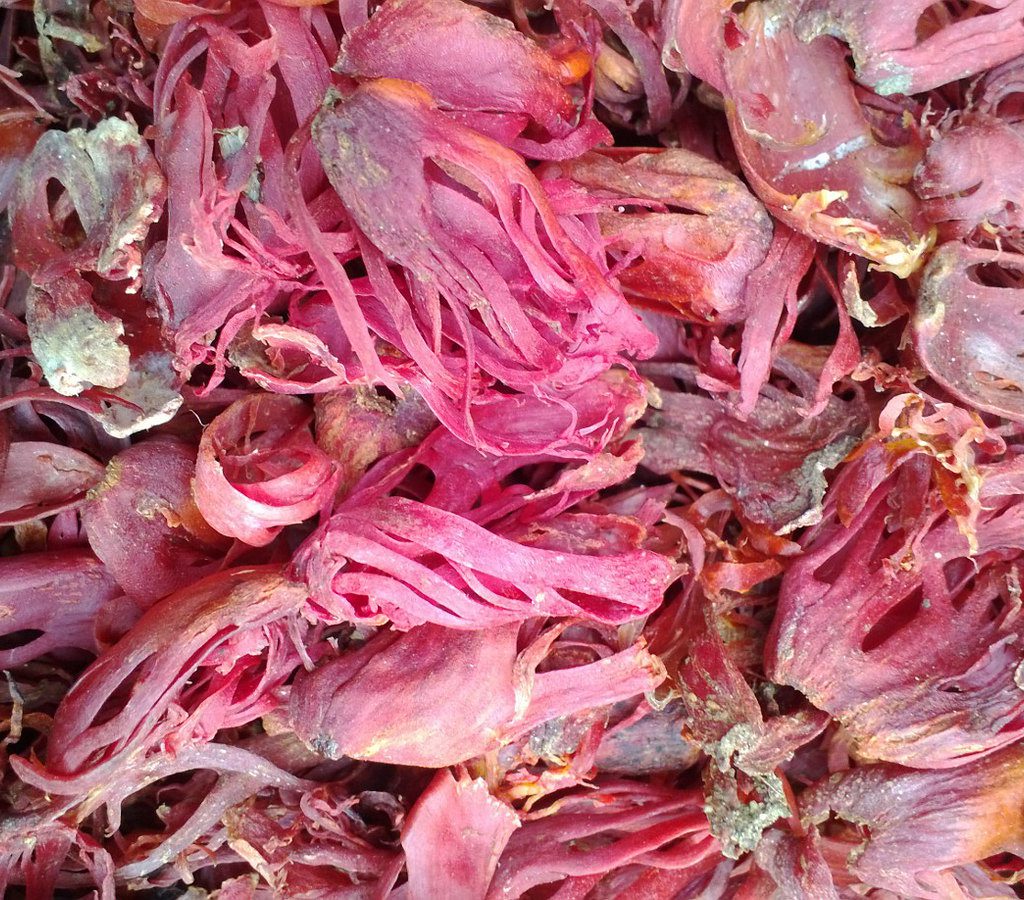
By anuandraj
Mace tastes close to nutmeg, which isn’t surprising considering they come from the same tree. Nutmeg is the seed, and mace is the flesh part of the fruit of the nutmeg tree. And as you can imagine, mace has a more delicate, almost floral flavor compared to nutmeg.
The peppery, warm undertones of mace perfectly complement baked dishes like pies, cookies, and even doughnuts. In Indian cuisine, it’s often tempered in the cooking oil that infuses all the other ingredients. However, if you cook mace for too long, it develops a bitter flavor. For that reason, it’s best to add it later than other spices that require more time in hot oil, like mustard seeds.
Ginger
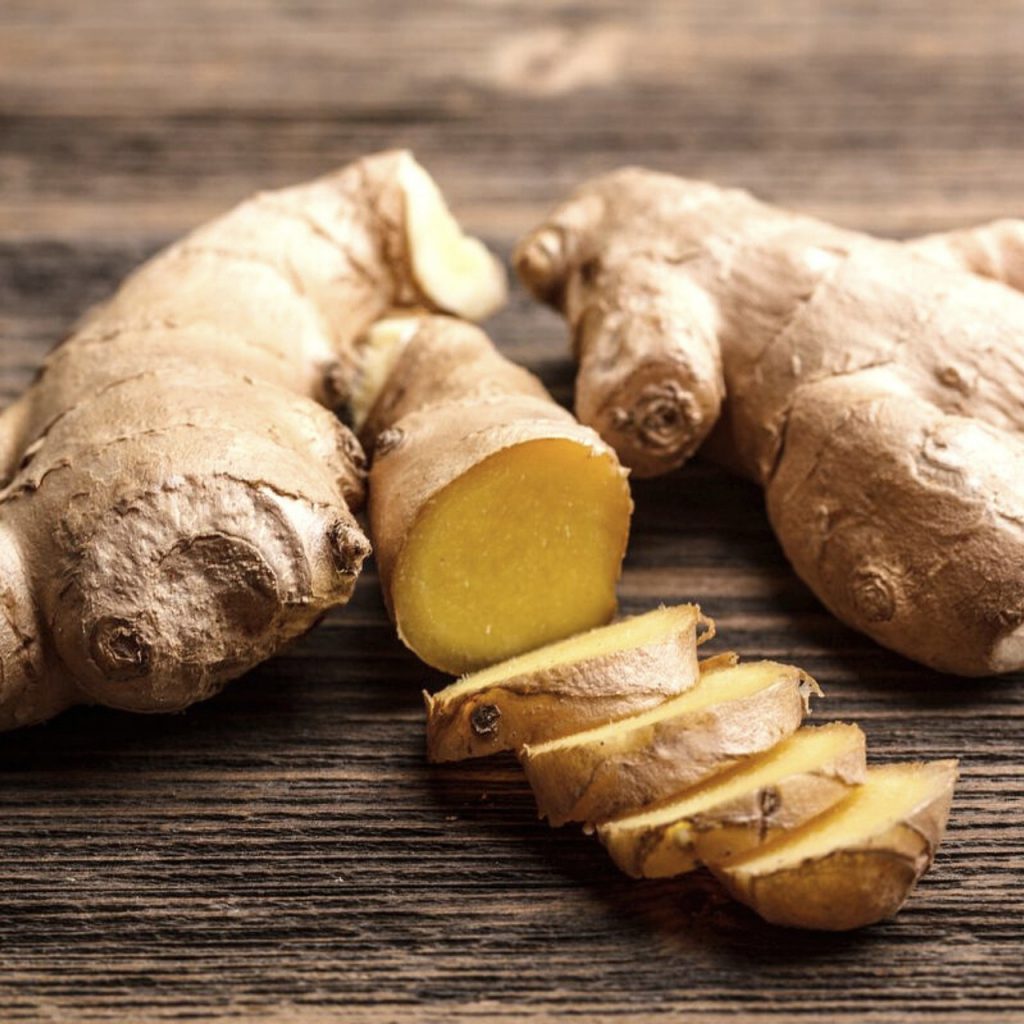
Ginger is an absolutely essential ingredient for most Indian recipes. It’s half of the famous ginger garlic paste used as a base for many dishes.
It’s often used in both fresh and dried forms and is frequently featured in spice blends and pastes. In Indian cooking, ginger is often used to add depth and warmth to savory dishes, such as curries and lentil soups. It is also used to add flavor to marinades, chutneys, and pickles.
In addition to savory dishes, ginger is also a popular ingredient in Indian desserts, as it adds a subtle spicy note to sweet dishes.
Saffron
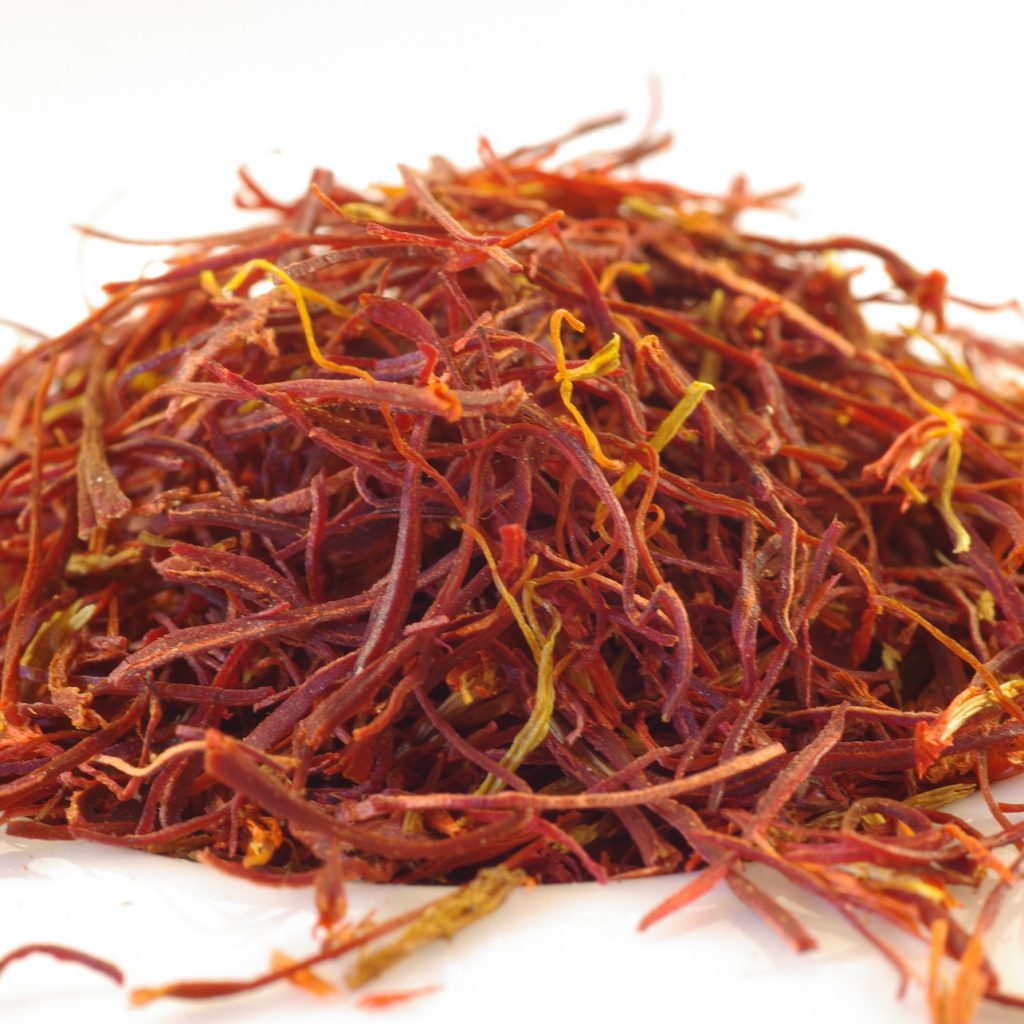
Saffron is known for adding an amazing red hue to dishes and being very expensive. Along with Greece, Iran, and Morocco, India is one of the largest producers of this subtle yet fragrant spice.
To use saffron, start by gently roasting the strands in the oven. Let them cool off a bit, and then crush them in a mortar. Use the saffron powder you obtain to aromatize cooking oil, milk, or water to add to your dishes.
Fenugreek
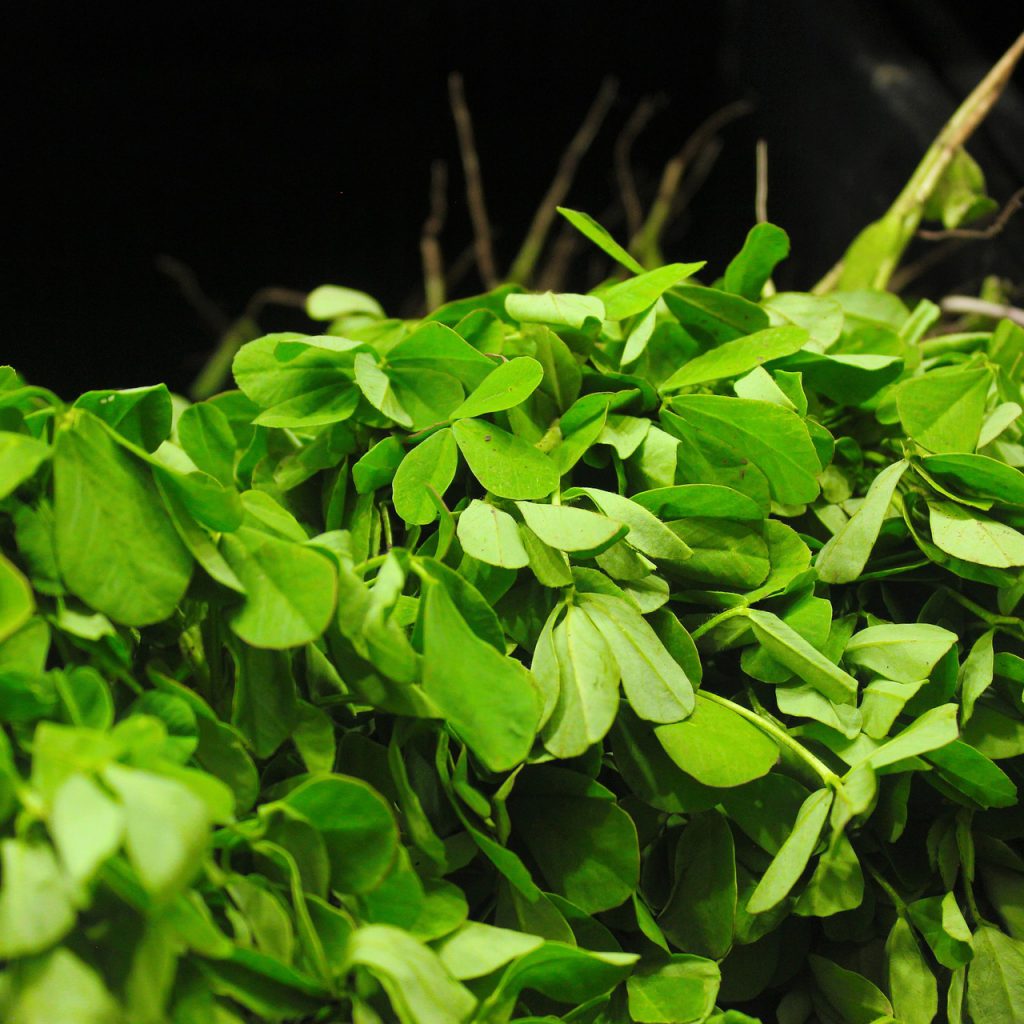
Fenugreek, (Greek hay) is a herb long used in alternative medicine as well as cooking. It’s a plant that looks like clover with a quite intense maple syrup flavor and a touch of bitterness. The leaves can be used as dried or fresh herbs, and the seeds make up the most used spices in Indian cuisine.
Fresh fenugreek leaves work wonders when used to garnish dishes like meat or vegetarian stews, soups, and sauces. And the seeds (ground or whole) are used in staple spice mixes like garam masala.
Tempering fenugreek seeds in hot oil reduces their bitter flavor. A splash of citrus juice at the end is also a good way to balance fenugreek’s intense flavor.
Anardana Powder
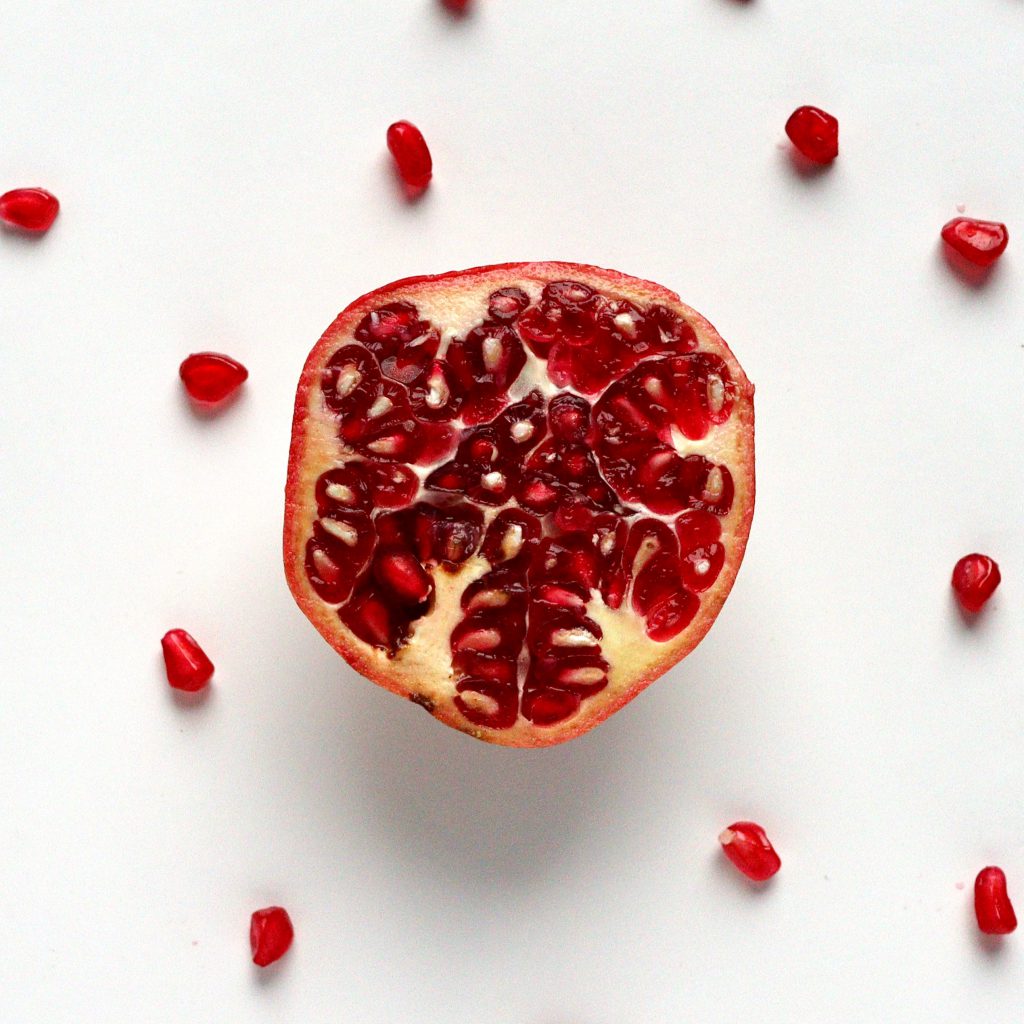
This spice is actually the powdered form of a fruit’s seed you know very well: pomegranate. You must be familiar with the taste unless you seed your pomegranates — we sincerely hope you don’t.
Anardana powder gives a tangy kick to stews, lentils, soups, and vegetable dishes. It’s prominently used in chutneys and northern Indian dishes like tadka dal and chole.
It’s used interchangeably with tamarind when you need a little sourness in your dish. Cooks and grandmothers from Rajasthan, Punjab, Sindh, Jammu, and Dogra swear by the anardana powder; in these regions, no dish is complete without it.
Amchur
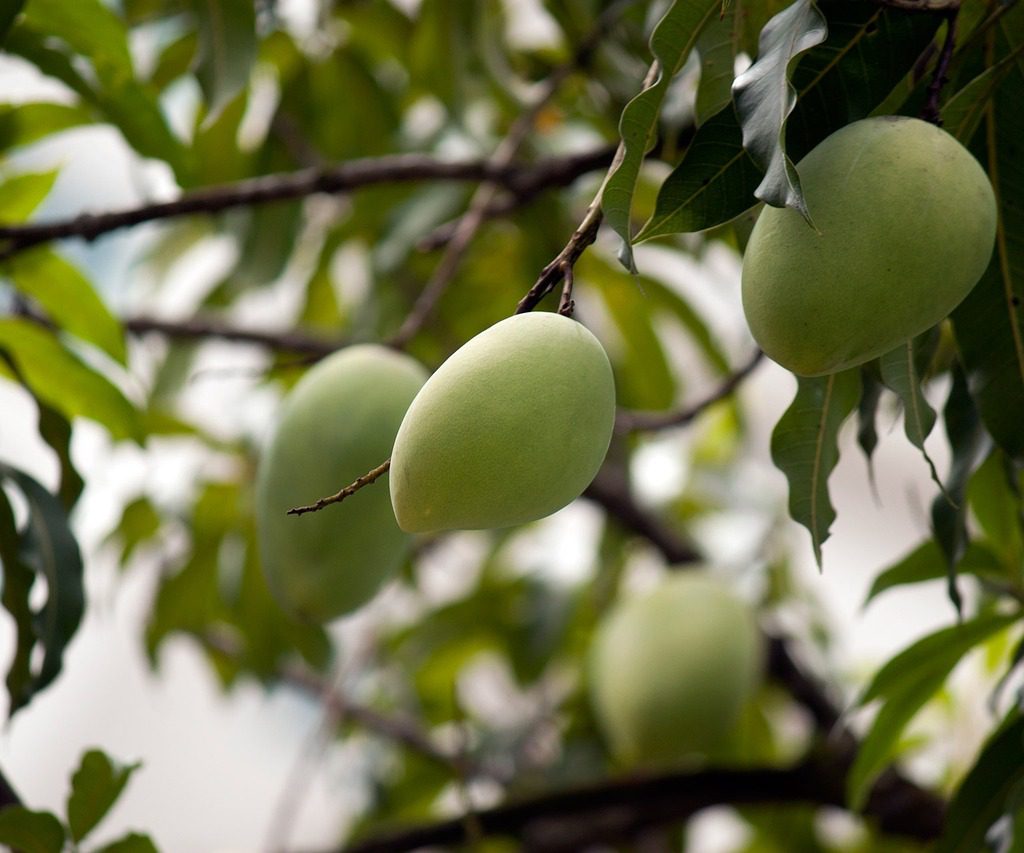
To make amchur, or amchoor, unripe mangoes are slowly sun-dried and then ground into a powder. Not surprisingly, it smells like a dusty chest full of tropical fruits – in a good way – and tastes even better. It’s mildly sour, resembling citrus, and surprisingly sweet, filling your mouth just like a slice of ripe mango.
In Indian cuisine, amchoor is used in almost all lentil recipes as well as chutneys, marinades, and pickles. Try incorporating amchur into your stews and soups. You can also add it to your fruit salads or even salad dressings. You can use amchur anytime you think the dish can take a splash of citrus zest.
Carom (Ajwain)
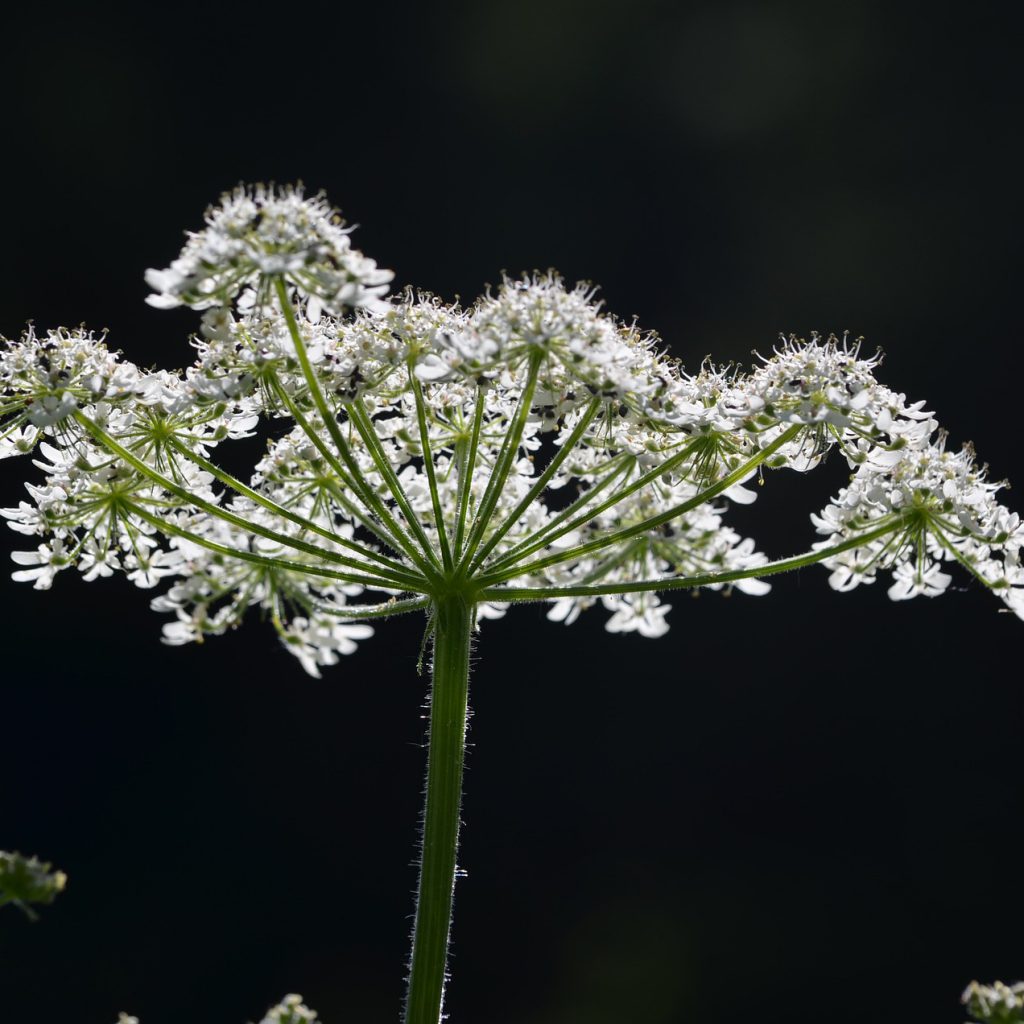
Carom, or ajwain, is a highly fragrant seed-like fruit related to cumin, fennel, and coriander. They look quite similar to each other too. However, carom smells like thyme (as it contains thymol) and tastes somewhere between anise and oregano.
Carom is a very strong spice with a piquant taste. Thanks to that, a little goes a long way — and if you add a bit too much, it can easily overpower the other flavors. It’s often used in dishes like tadka, pakoras, dals, lentils, and other hearty dishes.
If you want to use carom in your dishes, you should always temper it since raw carom is quite dominantly piquant. As it starts to get cooked, carom’s strong thyme taste mellows out, and you get more of an anise aftertaste.
Indian Bay Leaf
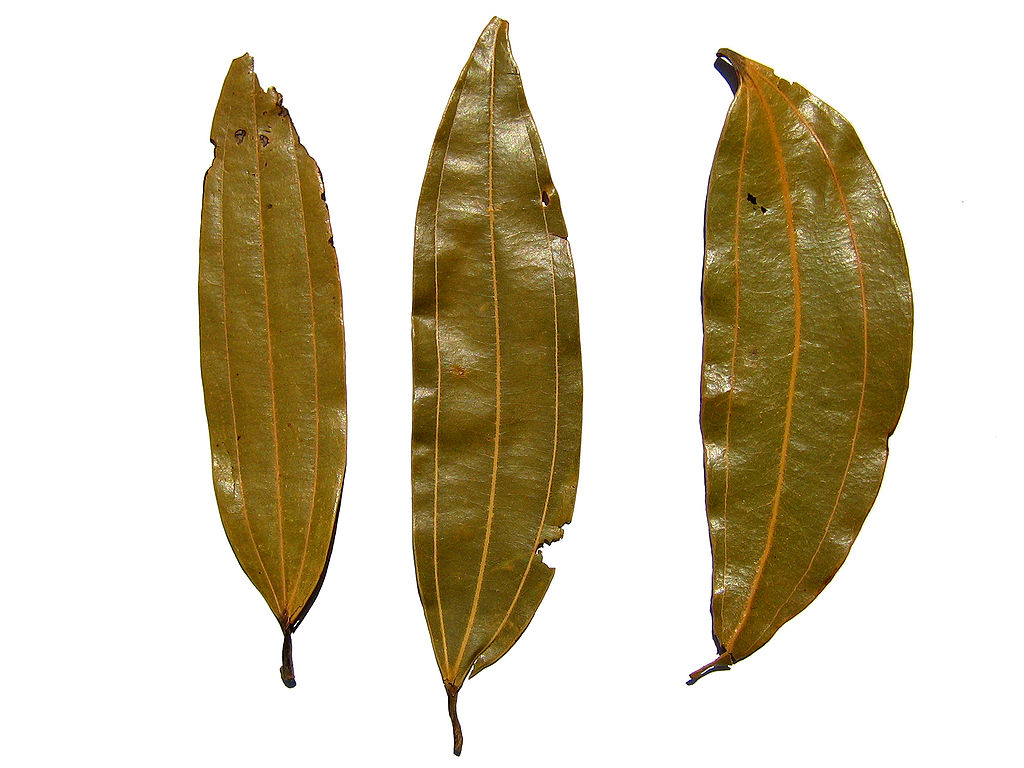
Indian bay leaves look just like regular bay leaves, except for the 3 veins that run through their body as opposed to the single one that Mediterranean bay leaves have. It tastes like cinnamon, cloves, and cassia at the same time.
Indian bay leaves are often used in meat dishes and biryani preparations, as well as in stews, curries, broths, dahls, and soups. When a recipe calls for an Indian bay leaf, never substitute it for its Mediterranean cousin, as they taste very different. If you don’t have it, simply omit it, or use a cinnamon stick instead.
Hing
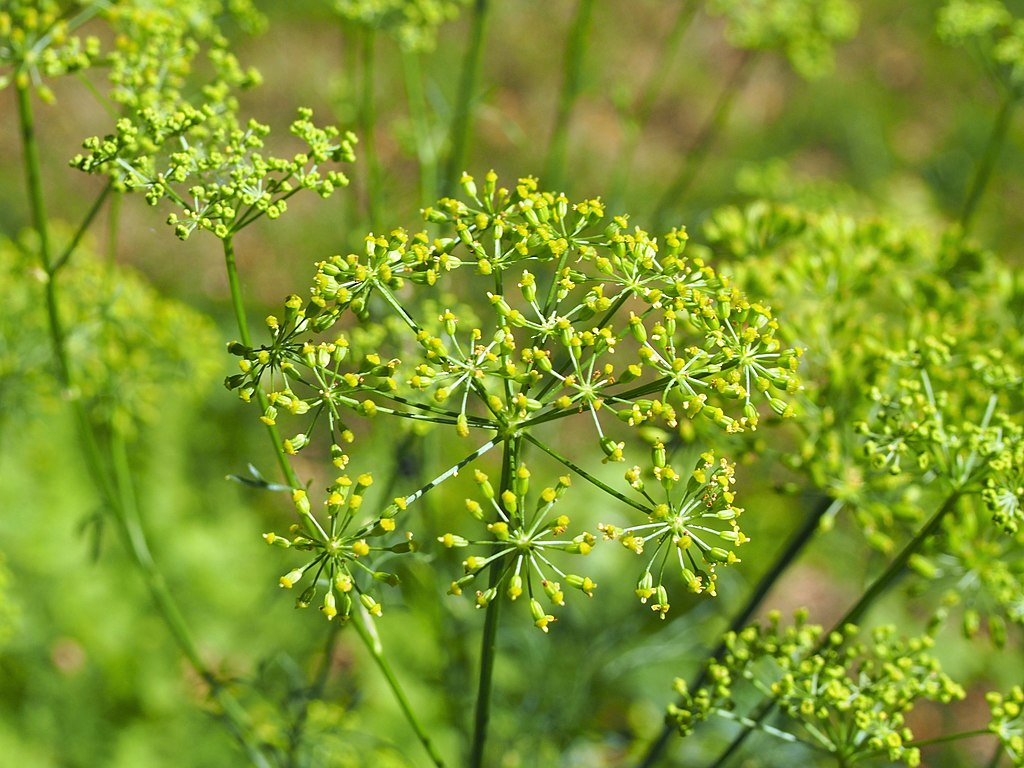
Hing, the spice known as asafoetida in the west, is a funky spice that can bring a breeze of joy to your culinary preparations. It’s a gum derived from a particular variety of fennel. You can find it in two forms: a yellowish powder or a lump of sticky brown gum.
The spice has some cheeky nicknames in Hindu, such as the stinking gum or devil’s sweat, as it smells a bit funky in its raw form. But don’t be intimidated, hing adds an irresistibly savory flavor to any dish. It particularly works well with vegetable stir-fries, chickpeas, potatoes, and lentils.
If you’re using hing for the first time, toast other spices like cardamom, coriander, cumin seeds, or fennel seeds, add your hing last into the oil and temper it just enough to dissolve it. Try using it in your dahls, grilled fish, curries, lentils, or vegetable dishes.
Kalonji
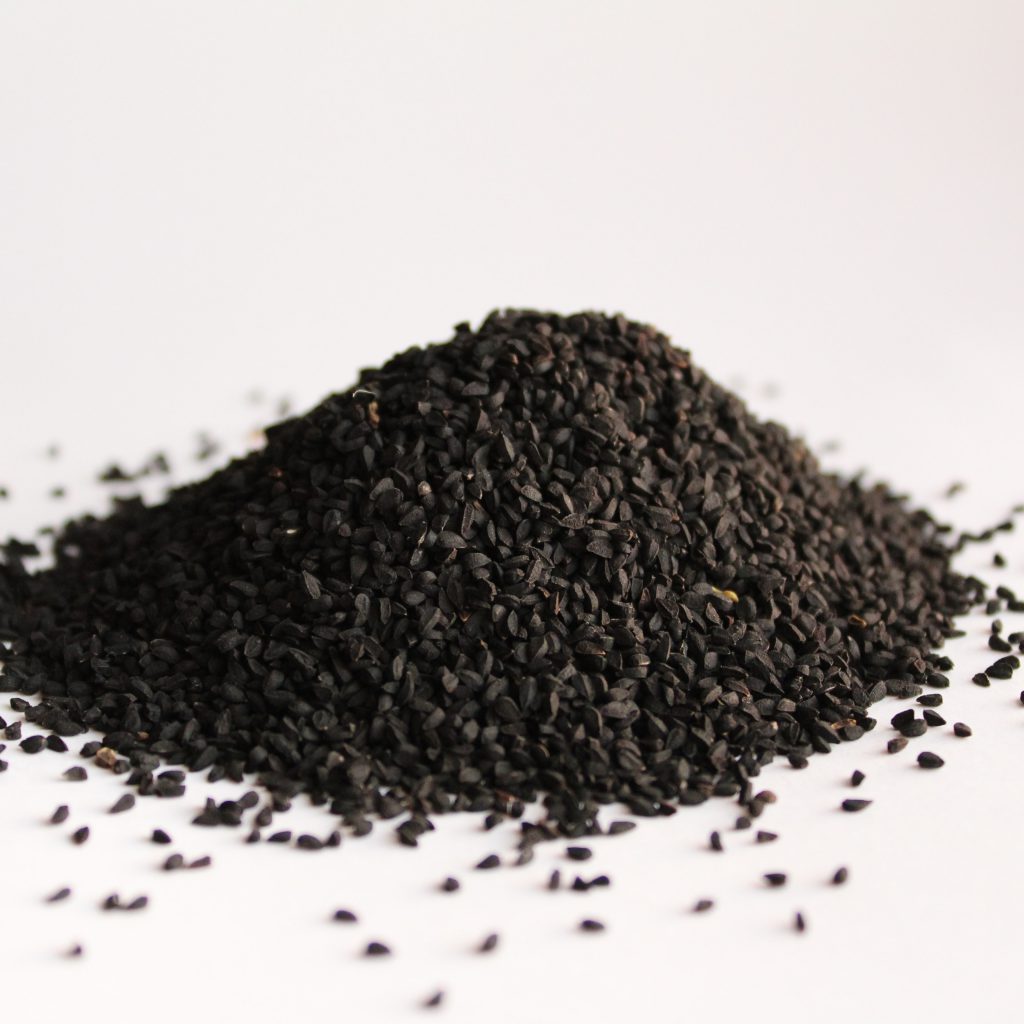
Also known as nigella seeds or kalvanji, kalonji are little black seeds that have an oregano-like taste with a certain bitterness. It’s a very common ingredient in Southeast Asian and Middle Eastern cuisines like Turkish, Moroccan, and Lebanese.
In Indian cuisine, kalonji seeds are often used in salads, pickles, chutneys, and naan. The peppery flavor they add is unique and lovely, and the black speckles make any bread look irresistible.
If you’re using kalonji in your dishes, give them a dry roast on a skillet until they pop. Just like mustard seeds, kalonji seeds release their aroma when heated. You can then go on to add them to your dishes.
Kalonji seeds can also be eaten raw. For that, after dry toasting them, sprinkle some over your salads, stir-fries, or dahls. They’ll add a crunchy texture and a nice peppery aroma.
Tamarind
Tamarind is a spice derived from a tropical leguminous tree native to Africa and Asia. The pods have a sticky, gummy texture like a date, and their taste is quite peculiar, sweet, and sour at the same time.
It’s a staple spice for sour dishes used throughout Southeast Asia, in Filipino and Thai cuisines, as well as in Latin American cuisines like Colombian and Mexican. The balance of sweet and sour of the plant changes depending on which tropical region it’s cultivated.
Indian chefs and grandmothers widely use the tangy spice as a souring agent. To include it in your dishes, pull out a piece of it and break it down in a little bit of hot water. Once dissolved, run it through a fine mesh to separate the solids from the juice. Discard the solids, and use the tamarind juice in your dish.
Spice Mixes
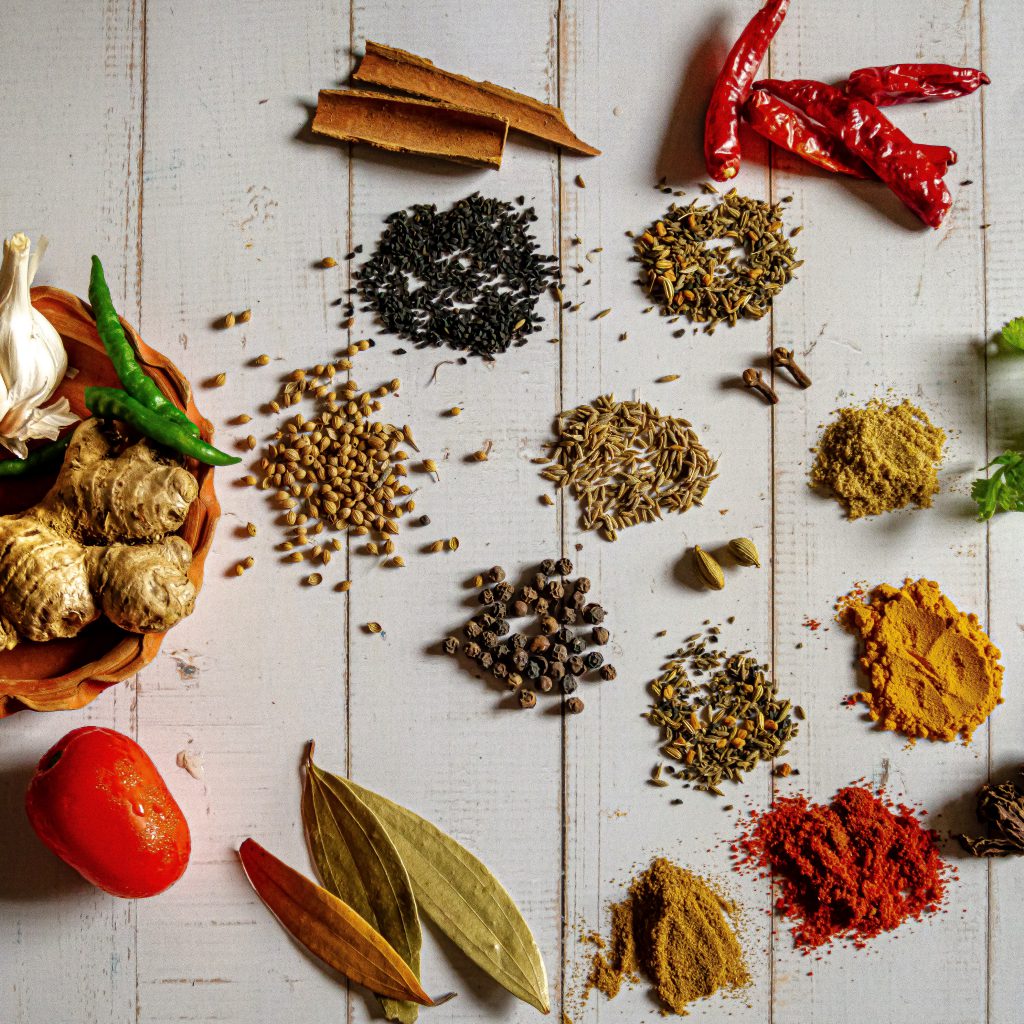
Indian cuisine is vibrant for both the eyes and the tongue, mostly thanks to the abundant colorful spices used to aromatize food. You can learn to incorporate these spices in your dishes the way Indian cooks do, but it requires time and effort to treat whole, raw spices in every cooking session.
A quick way to achieve a good enough Indian breeze is to use spice blends. They are often readily available in Indian stores, but try making your own blend for the freshest aroma.
You can also think of the spice blend as a base, and then you can adjust it further according to the dish you’re preparing the way you see fit. This way, you prevent all your Indian dishes from tasting the same. In fact, this is also how most Indian cooks do it anyway.
Garam Masala
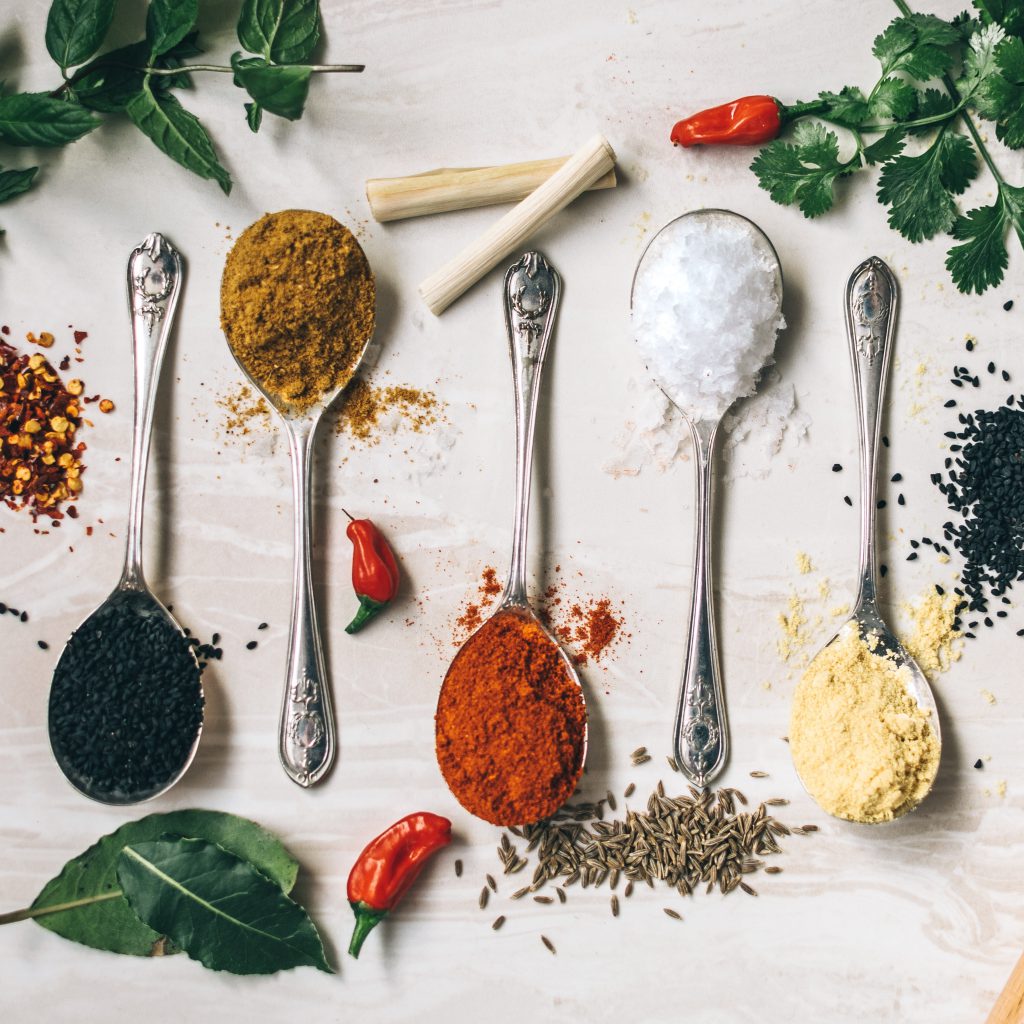
Masala is the Hindu word for “spice,” and garam masala literally translates to “hot spice”. But not all garam masala blends are hot. It solely depends on the ratio of hot spices you add in there.
It’s one of the most commonly used spice blends, especially in Northern Indian cuisine. Original garam masala consists of tens of different warm spices that change depending on the region, available ingredients, and the grandmother’s mood. All of the spices are toasted and then ground into a fine powder.
Here’s a list of them that are commonly used in garam masala blends:
- Coriander seeds
- Cassia leaves
- Chili flakes
- Kothgal
- Cumin seeds
- Anistar
- Indian bay leaves
- Black pepper
- Turmeric
- Cinnamon
- Fennel seeds
- Stone flower
- Cardamom
- Cloves
- Nutmeg
- Mace
- Mustard seeds
- Black rock salt
Since all the spices in garam masala are already toasted, you can simply use this blend at the end of the cooking session to season your dish. But it’s also commonly tempered at the beginning to season up the oil.
By doing so, you add deep, smoky back notes thanks to warm spices like cumin and pepper. On the other hand, using it at the end brings up the evanescent notes from the cinnamon, clove, and cardamom.
Chaat Masala
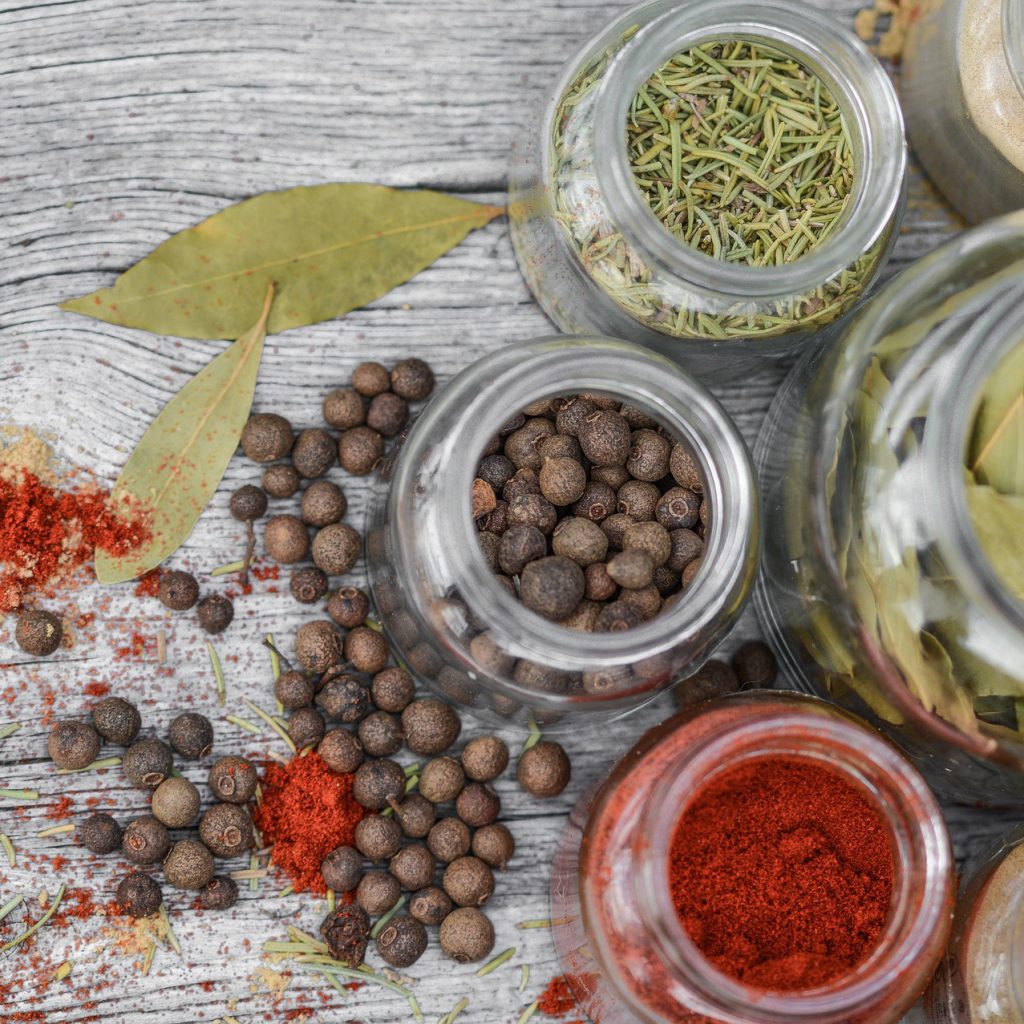
Chaat masala is more on the funky side of the flavor spectrum. Chaat is a type of Indian street food that usually features a kind of fried dough and various other ingredients. They usually taste tangy, spicy, and salty, especially thanks to chaat masala. But you can also find sweet chaats.
As the name suggests, chaat masala is used for chaat recipes, but it’s also common to sprinkle some over fruits and vegetables to make a savory snack that tastes like Chex mix.
Here’s a list of spices commonly used in chaat masala mixes:
- Coriander seeds
- Fennel seeds
- Ajwain seeds
- Cumin
- Amchur powder
- Ground ginger
- Hing powder
- Dried mint
- Black pepper seeds
Just like garam masala, chaat masala is a very popular spice blend among Indian cooks. They are commonly used in dishes, snacks, and sometimes even on sweets. But it doesn’t mean that all these dishes end up tasting the same because there’s no one-size fits all recipe for either of these spice blends. They are highly personalized.
Panch Phoran
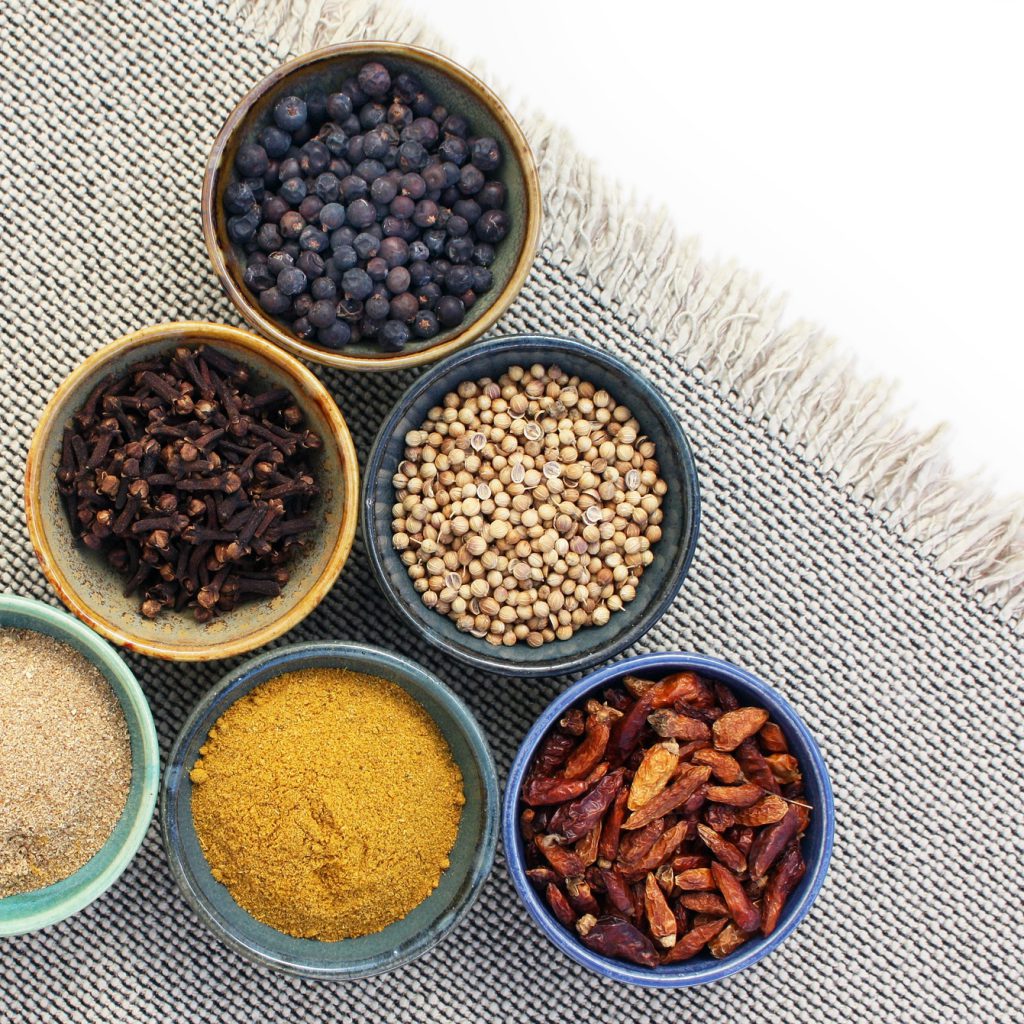
Panch phoran is the five spice mix favored in the whole Indian subcontinent, especially in eastern India and Bangladesh. It literally means five spices, containing the following spices:
- Cumin seeds
- Fennel seeds
- Brown mustard seeds
- Nigella seeds
- Fenugreek seeds
The combination of these spices makes up for a deep flavor profile. Unlike garam masala or chaat masala, all the spices in panch phoran are always left whole and untoasted. Depending on the recipe you’re working with, you can dry toast or cook them in oil.
The Indian five-spice blend works great as a rub for meats. It’s also an excellent aromatizer for stews, vegetable dishes, and loaves of bread.
Because it’s much easier to put together than garam masala or chaat masala, and it also stays fresh longer as the spices aren’t toasted and ground, you can make some panch phoran in a small jar and reach for it whenever you have a hankering for some Indian flavor.
Making Your Fresh Spice Mix
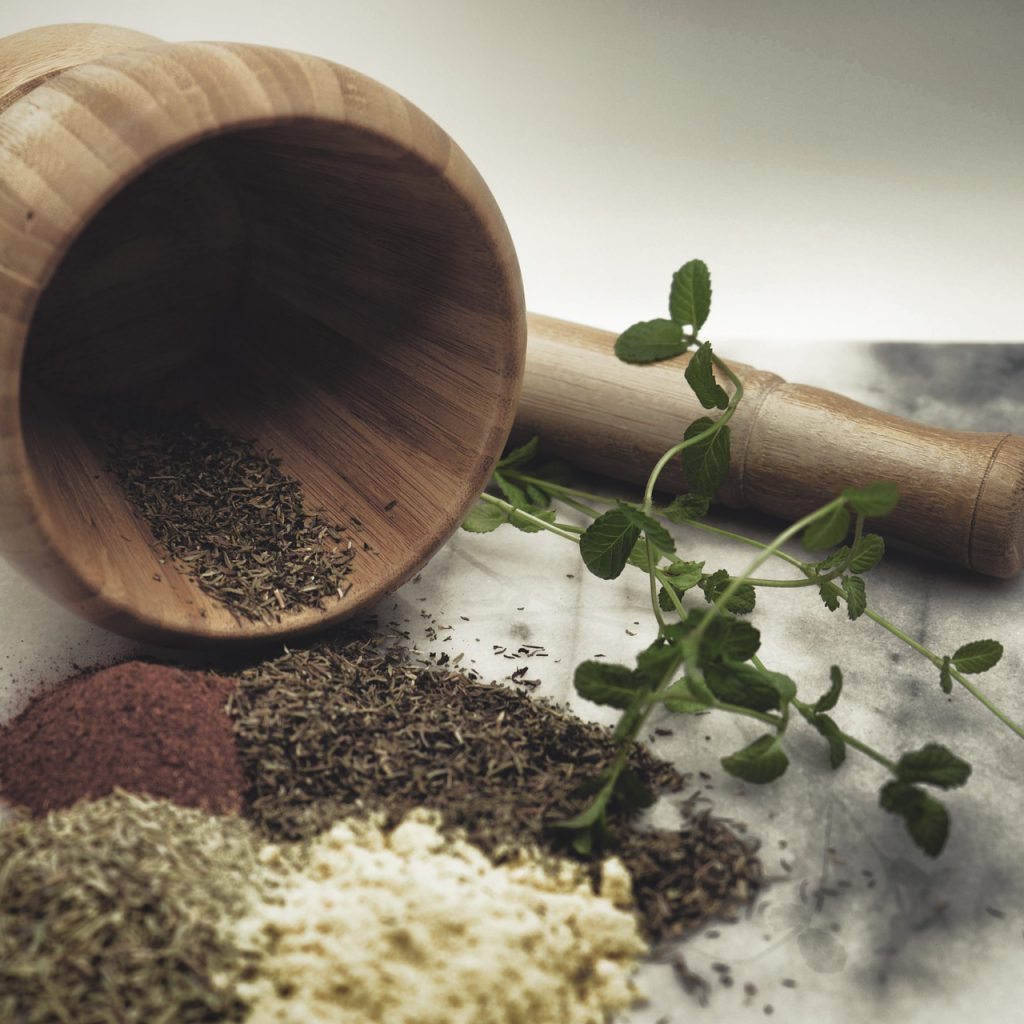
As we said, you can find these spice mixes readily available in Indian stores. But making your own mix is just a better way to get in touch with the spices. Plus, your own blend will be much fresher.
Secondly, if the sheer amount of Indian spices is a bit intimidating to you, start by playing around with a few of them, such as cumin, fennel seeds, mustard seeds, and coriander. Once you get used to cooking with them in their different forms, you’ll find yourself introducing new spices to your spice rack anyway.
Most people don’t know how cumin or cinnamon are supposed to taste in a dish. Once you start working with fresh spices and treating them the proper way, you’ll be surprised how much they can change the palette of your meals. Here are a few techniques to unlock the superpower of these little aromatizers.
Toasting

Once you collect the spices you’d like to work with, the first technique you should know about is toasting. It’s simply slowly heating up the spices, and it really brings out the oil in them.
You can toast multiple spices at once as long as they’re approximately the same size, like cumin seeds, coriander seeds, allspice seeds, and black pepper seeds. Put the spices in a skillet and toast them on low heat until the spicy fragrant fills up the room. If you’d like to toast a bigger spice, like a star anise or a cinnamon stick, you should toast it separately.
Tempering
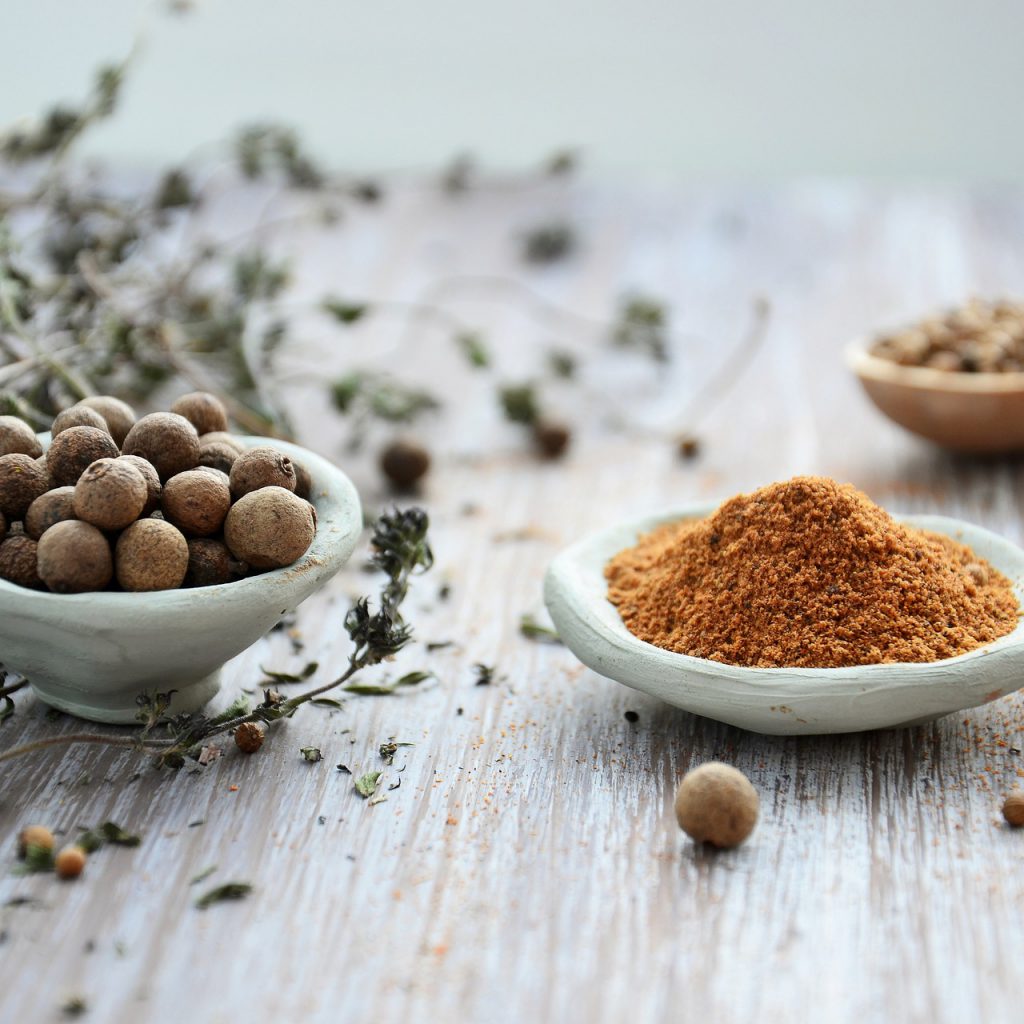
Tempering is the technique of infusing hot oil with aroma. This process is more about the oil than the spices. When you temper them, you distribute the flavors and aromas from the spices into the oil. And in turn, the oil infuses into the whole dish homogeneously. It works really well when you’re making homogenous dishes like rice or soups.
Some dishes call for a combination of homogeneously distributed flavors and some texture, for example, meaty stews. There’s no reason to keep from mixing powdered spices and whole spices and treating them with a combination of tempering and toasting.
Grinding
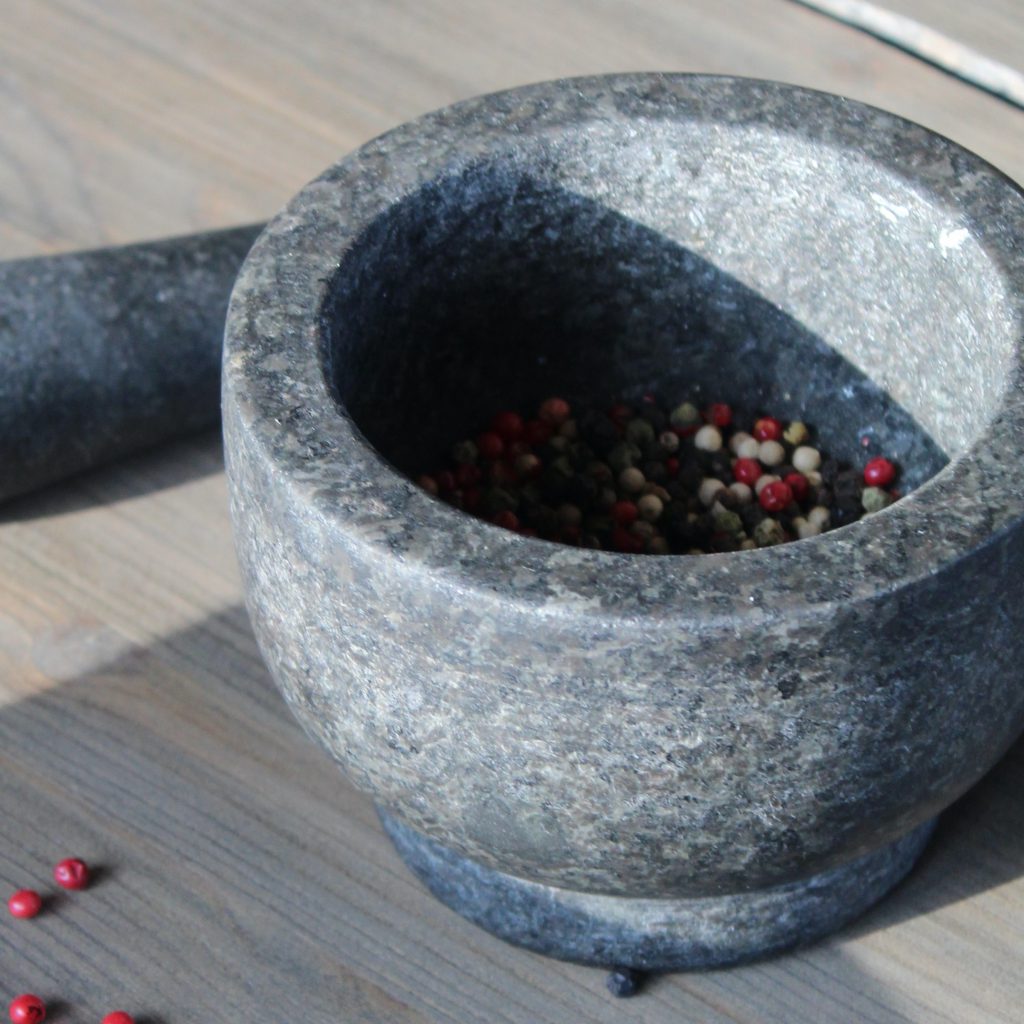
If you’re really serious about making incredible spice blends, the most important thing you must have in your kitchen is a set of mortar and pestle.
Grind your toasted spices in a mortar to the fineness you prefer. For veggies and meat rubs, a textured spice blend is better to add a little crunch on the outside. For rice dishes and soups, go ahead and grind further until you get a fine powder.
Blending
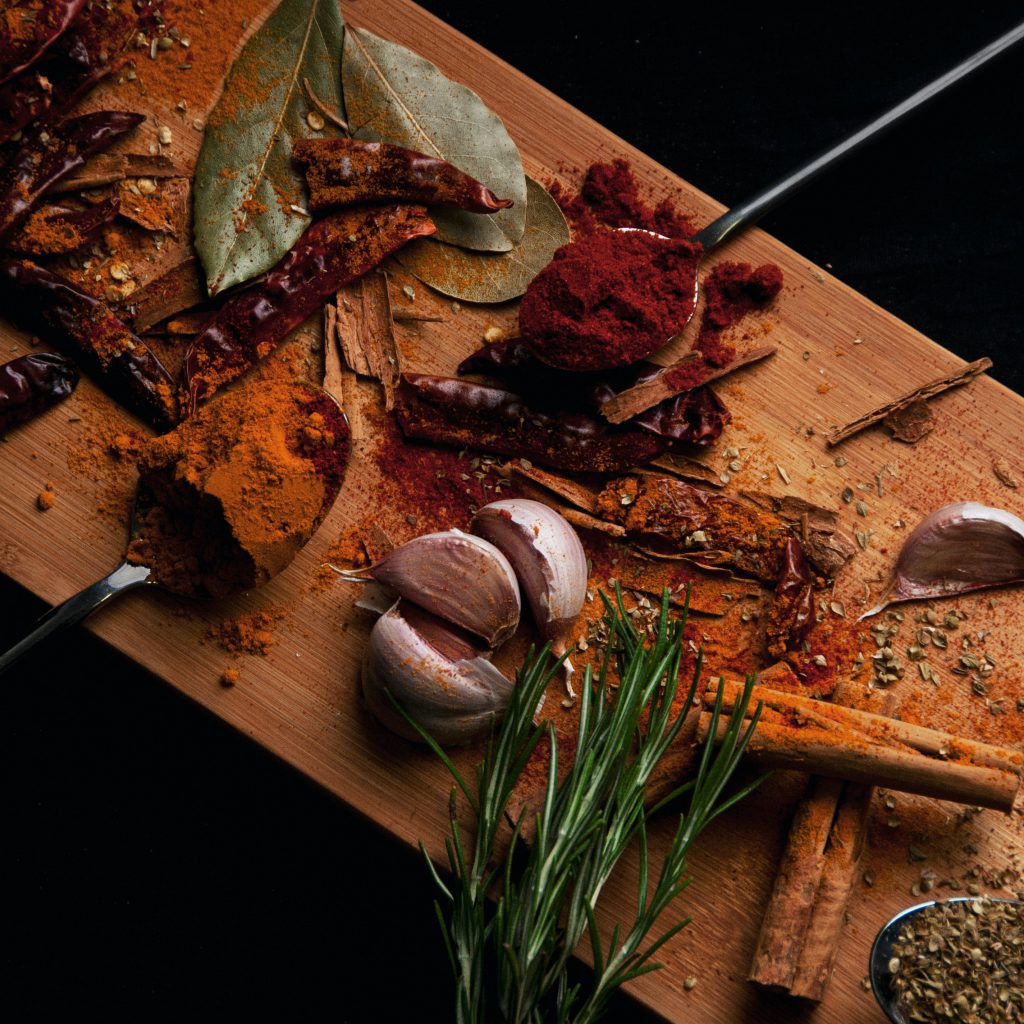
A blend is as simple as two spices mixed together. Take the Indian spice blends that we mentioned as a guideline to create your own blend. If you like cinnamon, cardamom, or ginger, go ahead and mix them and try the mixture on different things to see what you like. This is the best way to educate yourself and stay creative.
How to Spice Up a Dish Like an Indian Chef
Most people think Indian dishes are spicy. But there’s a difference between spicy, hot, and aromatic. Contrary to general belief, most Indian dishes aren’t hot.
There’s a logic behind how Indian cooks use spices. Whole spices are added first as they take longer to release their flavor, and spices that have a tendency to burn last, like dried herbs, ground turmeric, or cumin powder.
Another trick to good Indian cooking is always adding some whole spices in oil, i.e., to temper them. Known as tadka in Hindu, this step is rarely skipped. Whether in some ghee, olive oil, or another type of oil, tempering the spices releases different layers of aroma into the oil.
On the other hand, if you add the spices directly into the sauce or on top of the dish, you get a slight raw taste.
Ready to Spice Things Up!
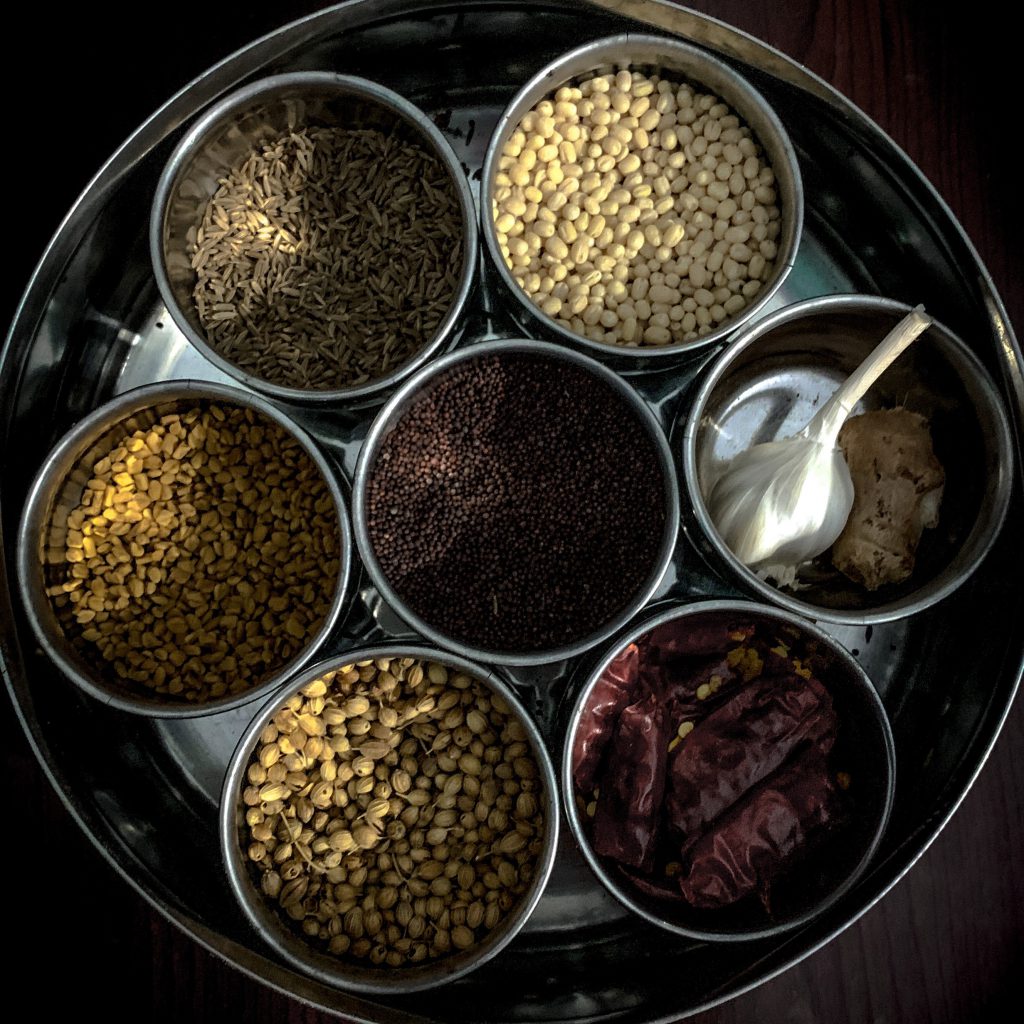
Spices are the heart and soul of Indian gastronomy. If you’re into Indian cooking, you should definitely go beyond regular curry and discover the different spices that Indian cooks and grandmothers have been creating wonders with.
One thing to keep in mind about spices is that they come from agricultural farms, just like fruits and vegetables. And the quality of the product, as well as how long it has been sitting on the shelf, determines how good it tastes. So when you’re shopping for spices, pay attention to the quality of the ingredients and the manufacturing date.
And most importantly, don’t throw them at the back of a cupboard where you’ll forget about them. Keep them in your eyesight and use them whenever you get the chance. You’ll be a spice guru in no time!


